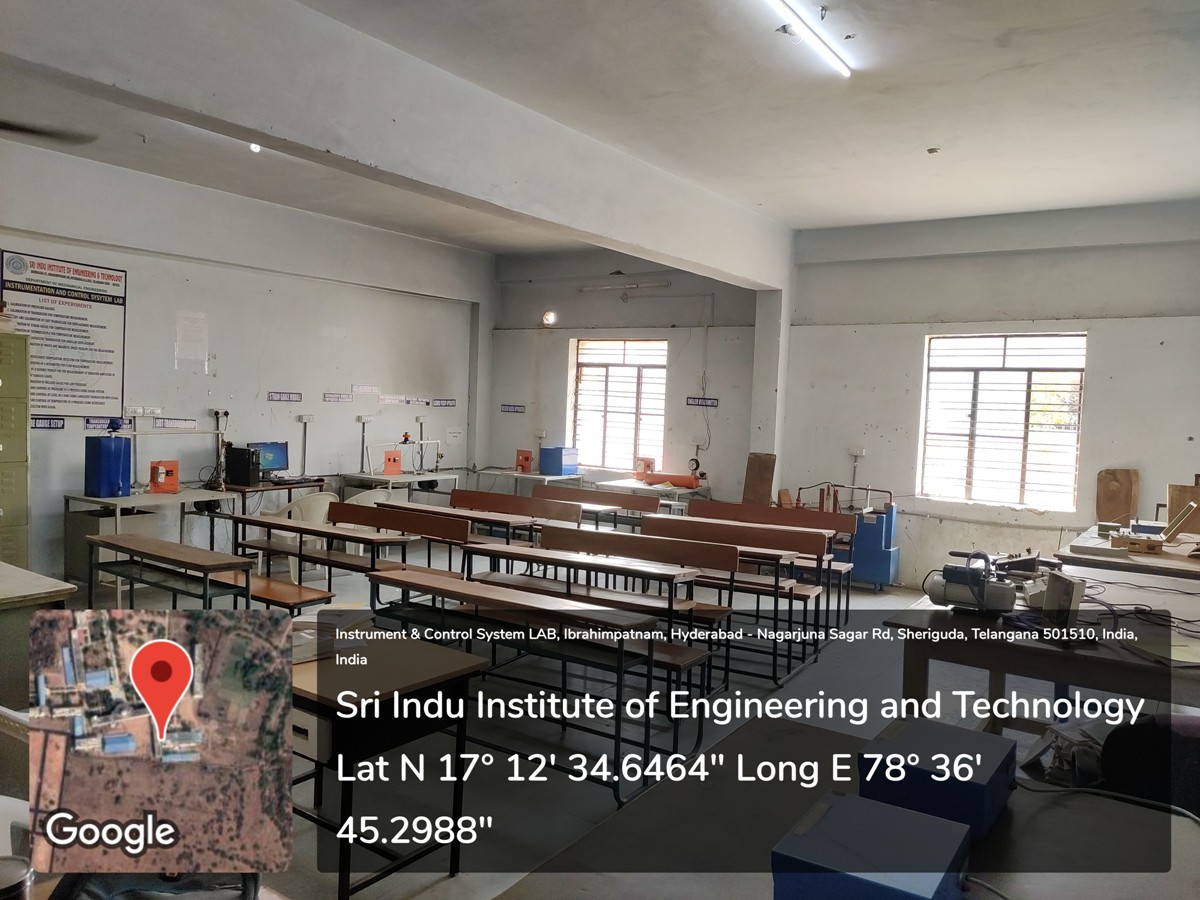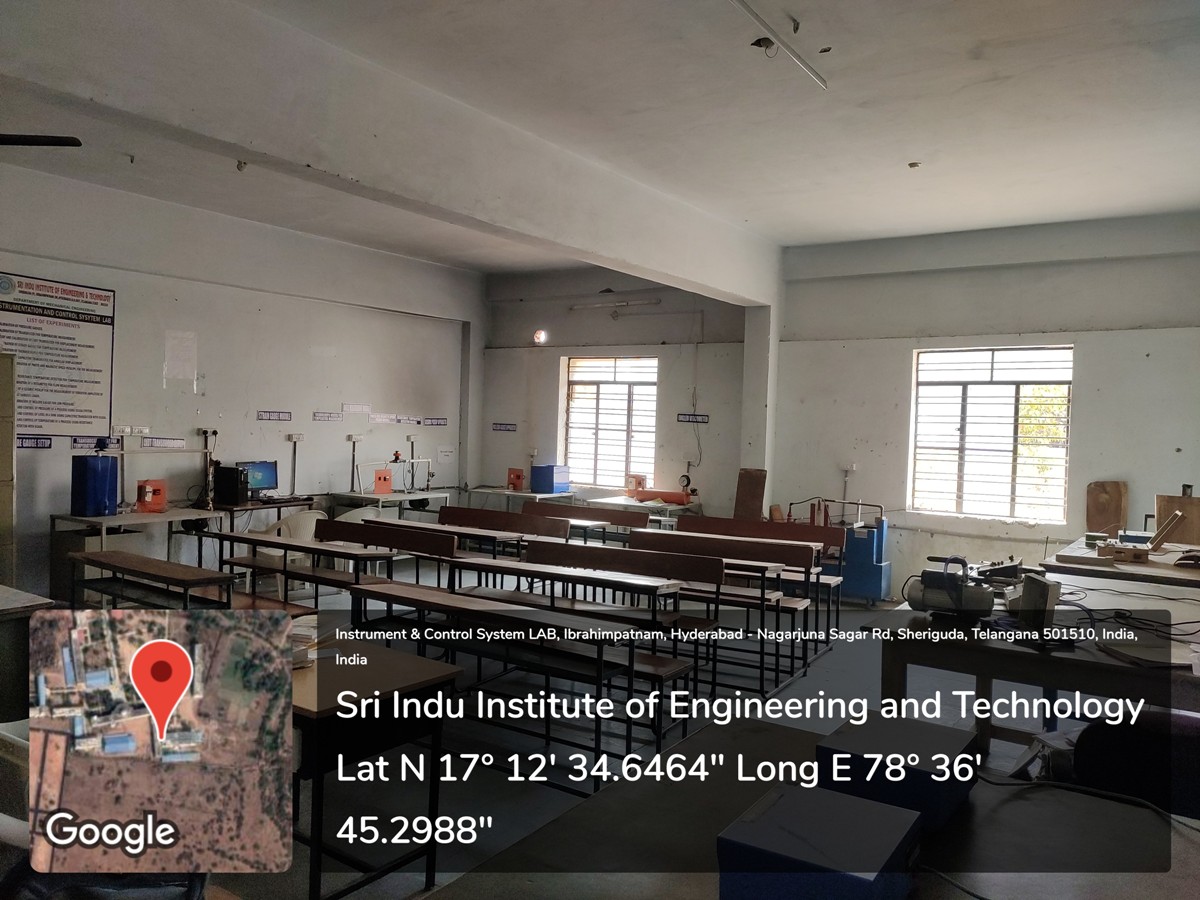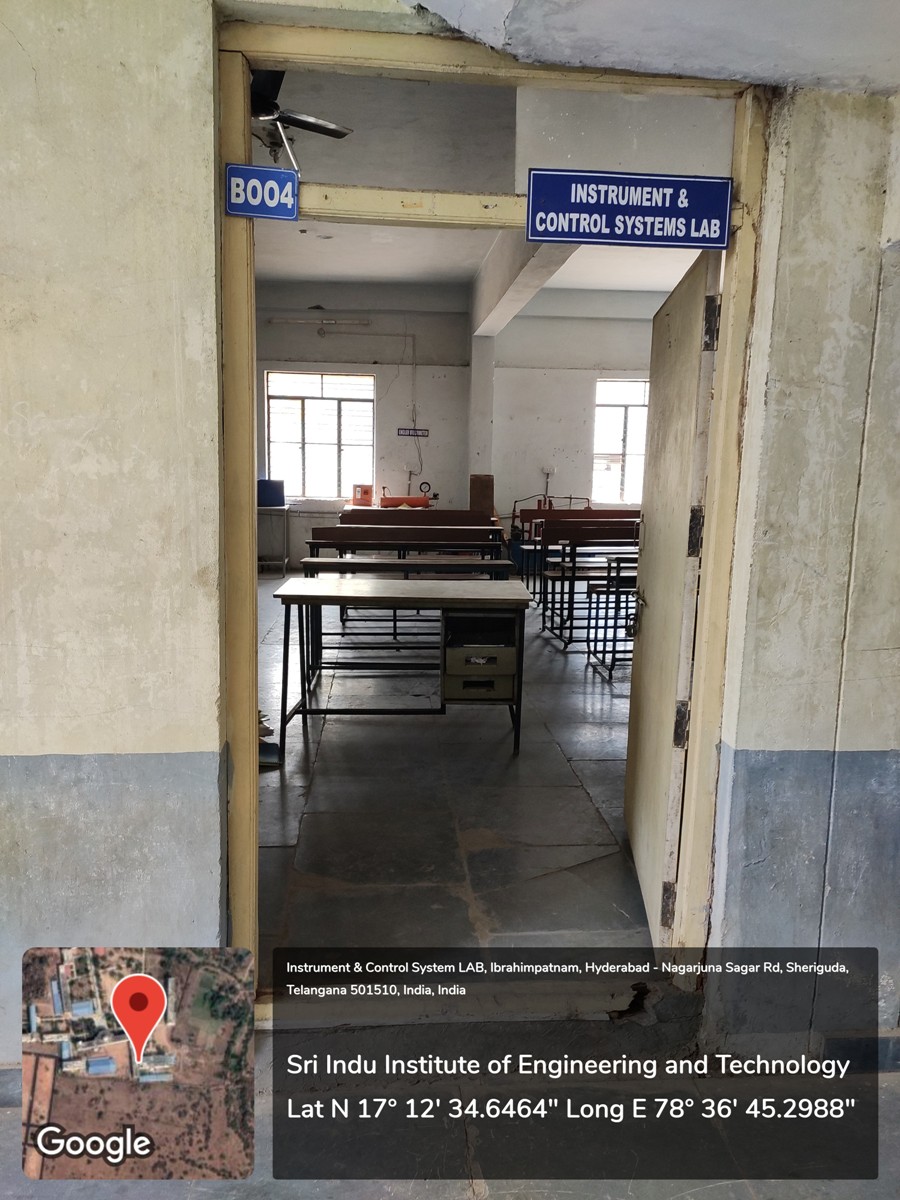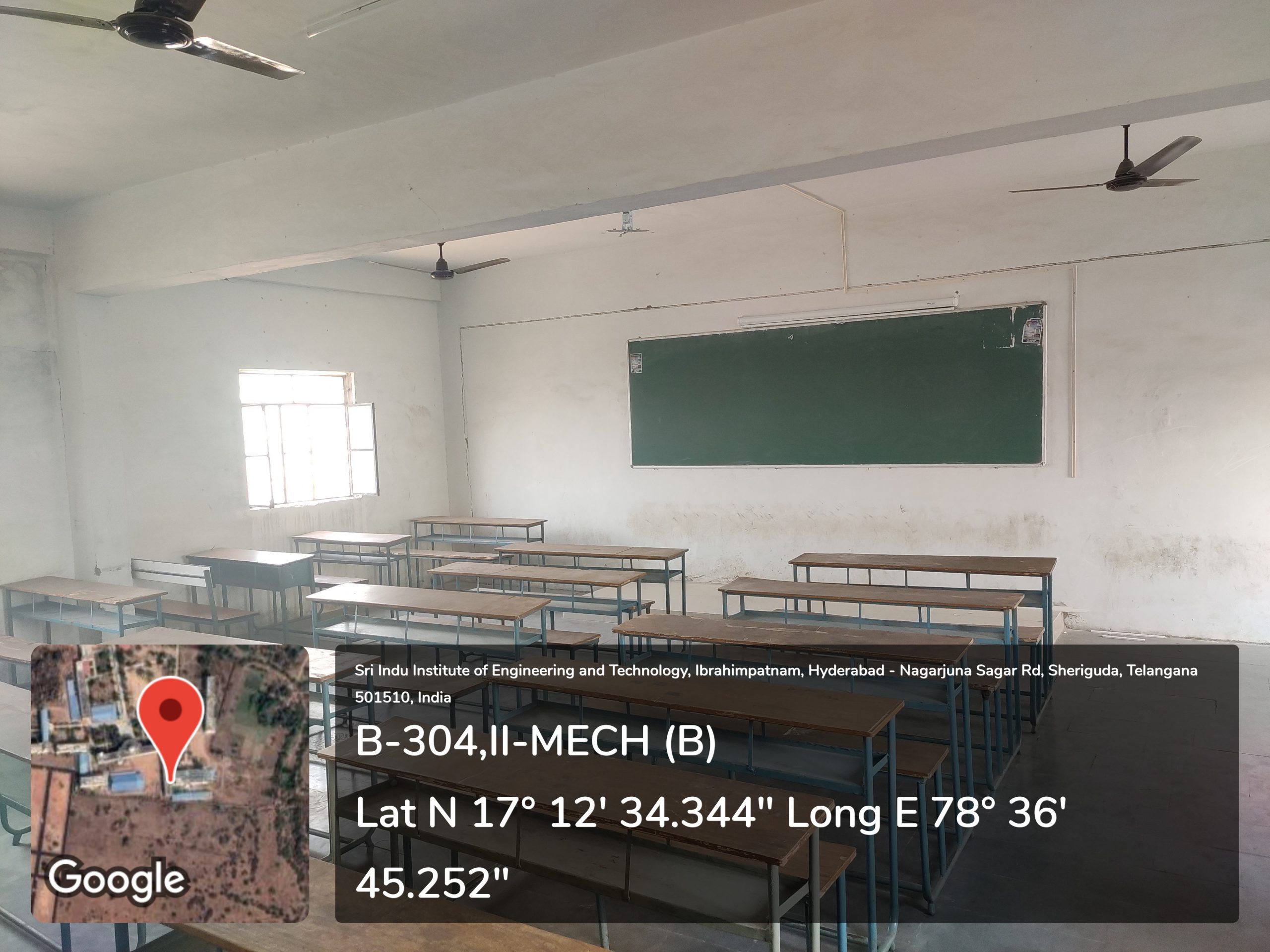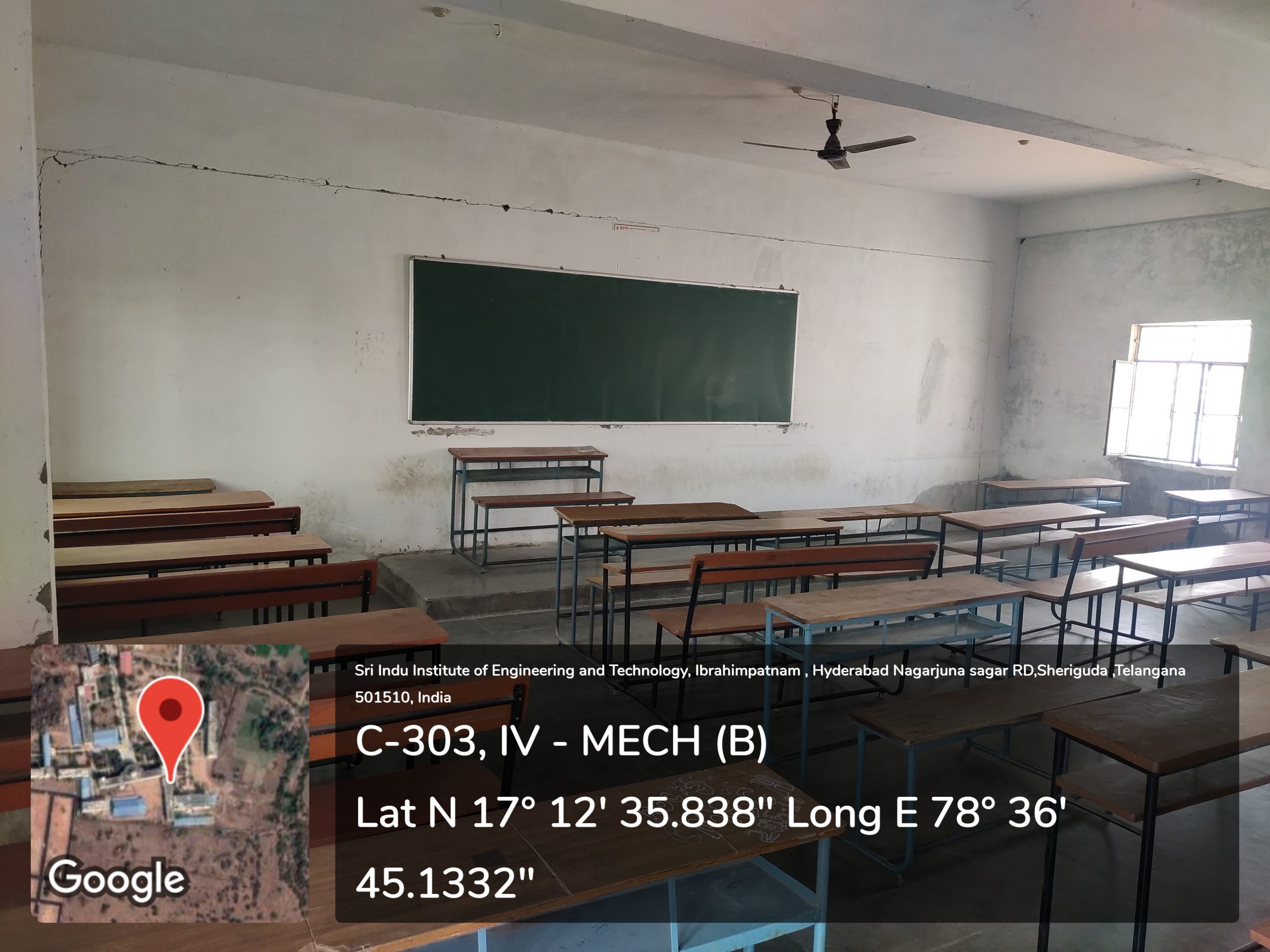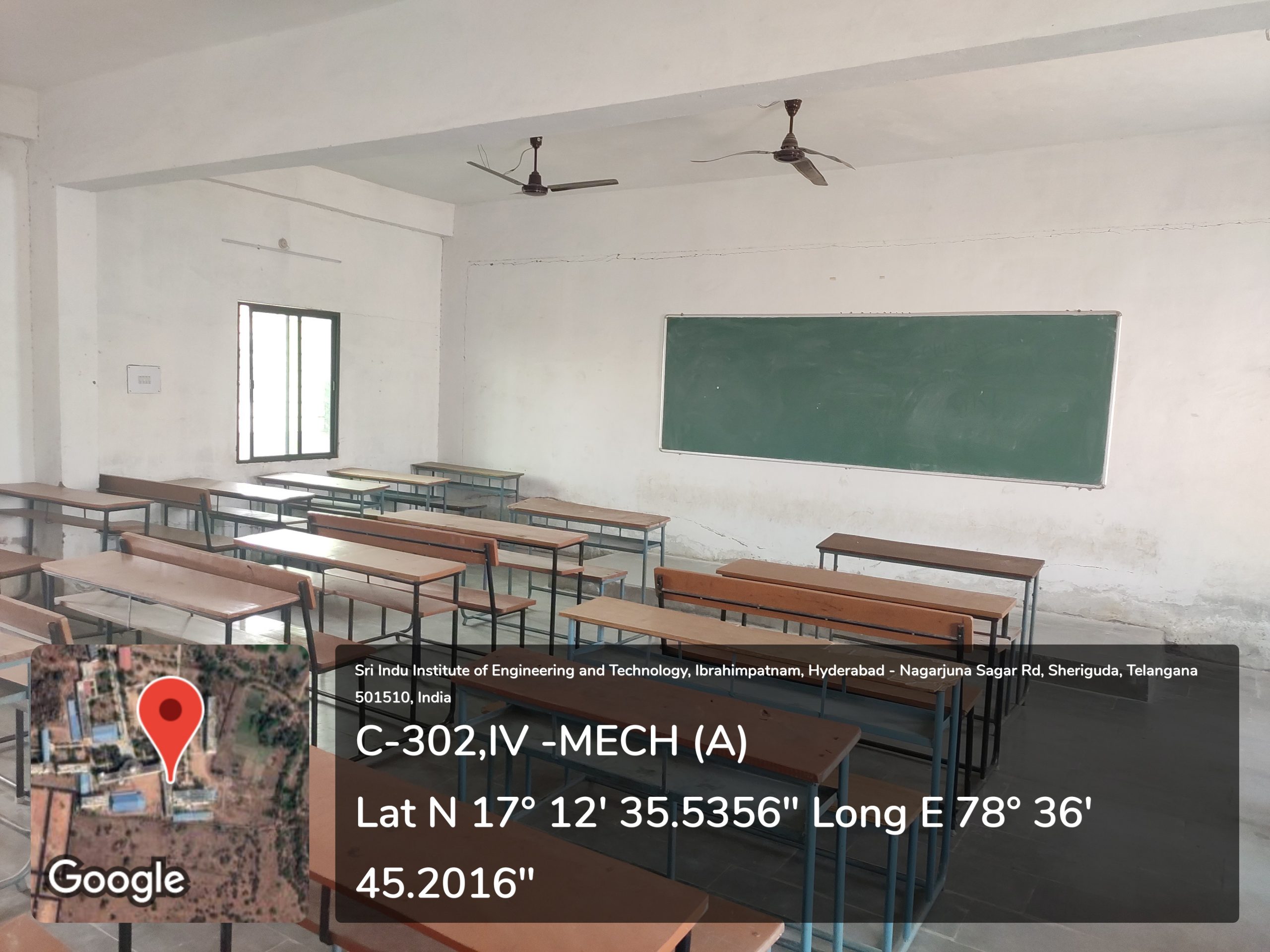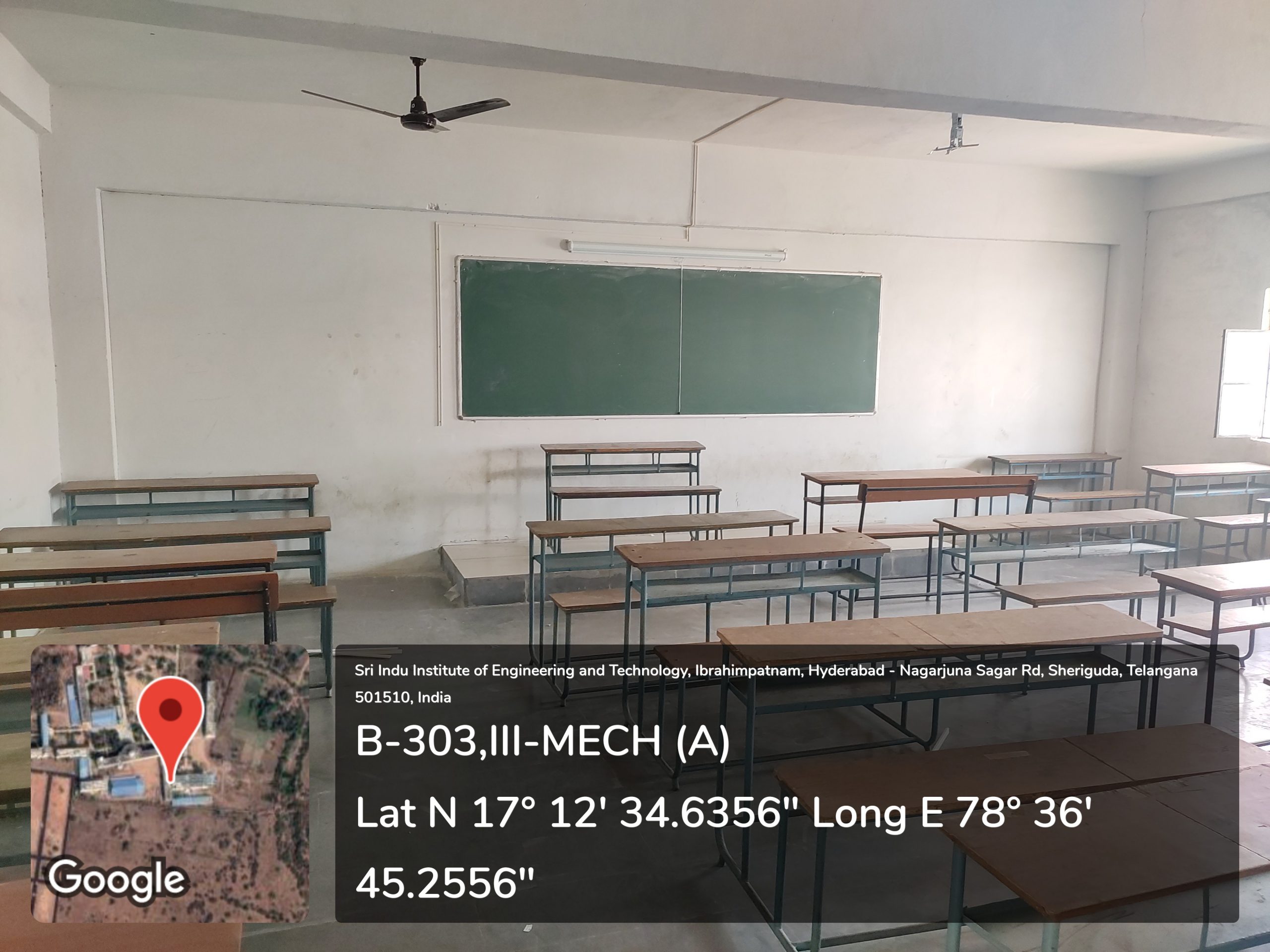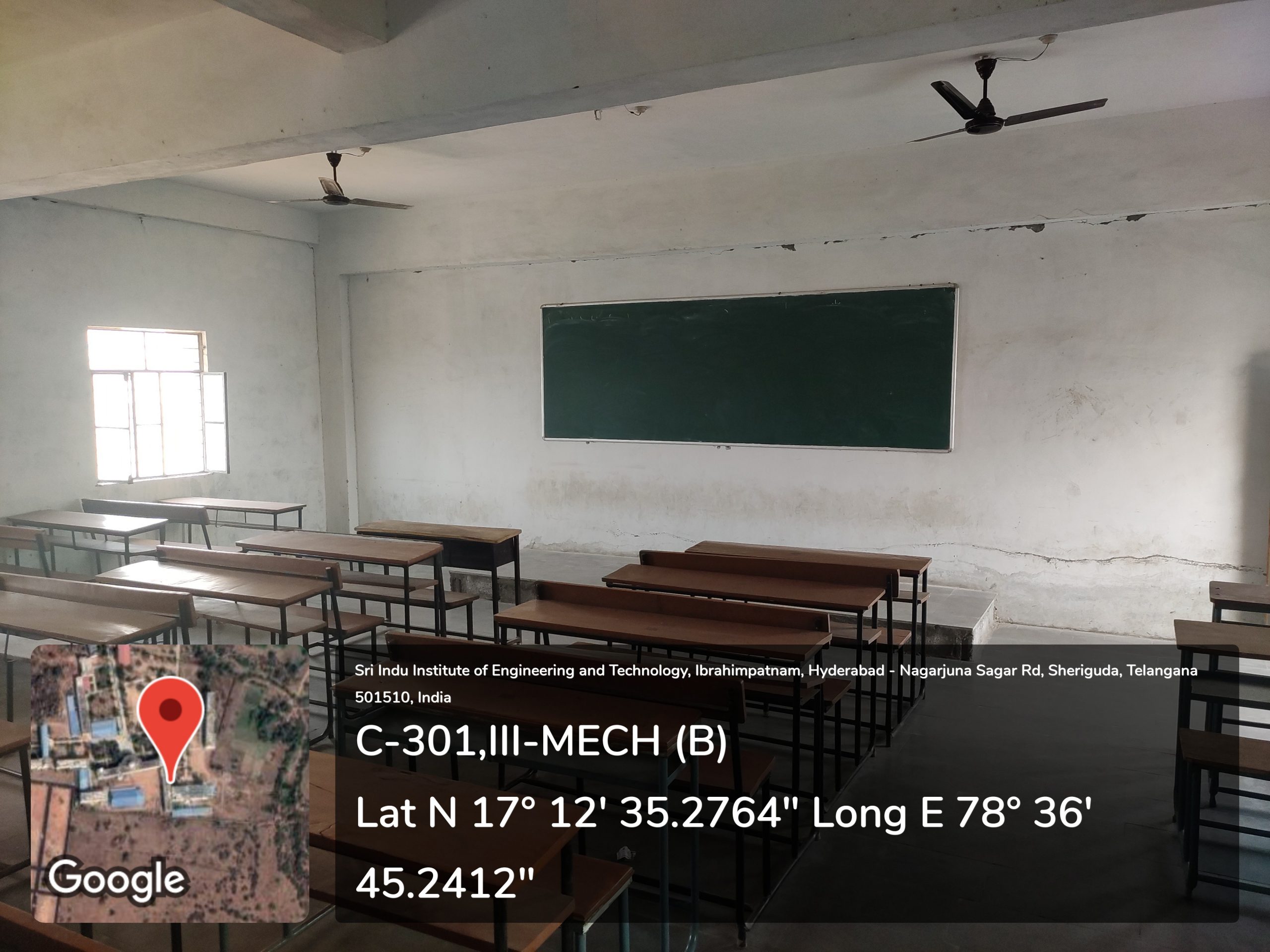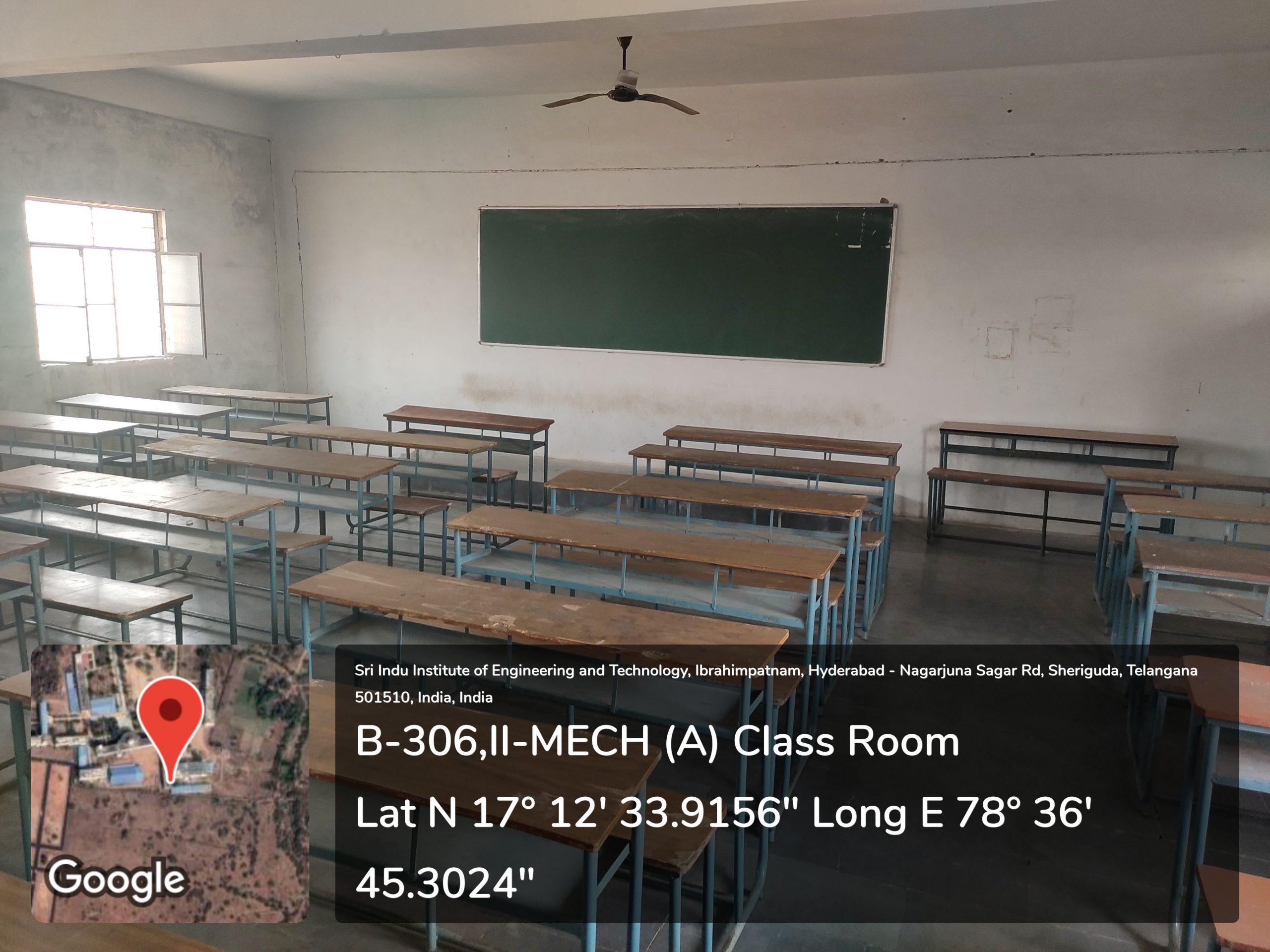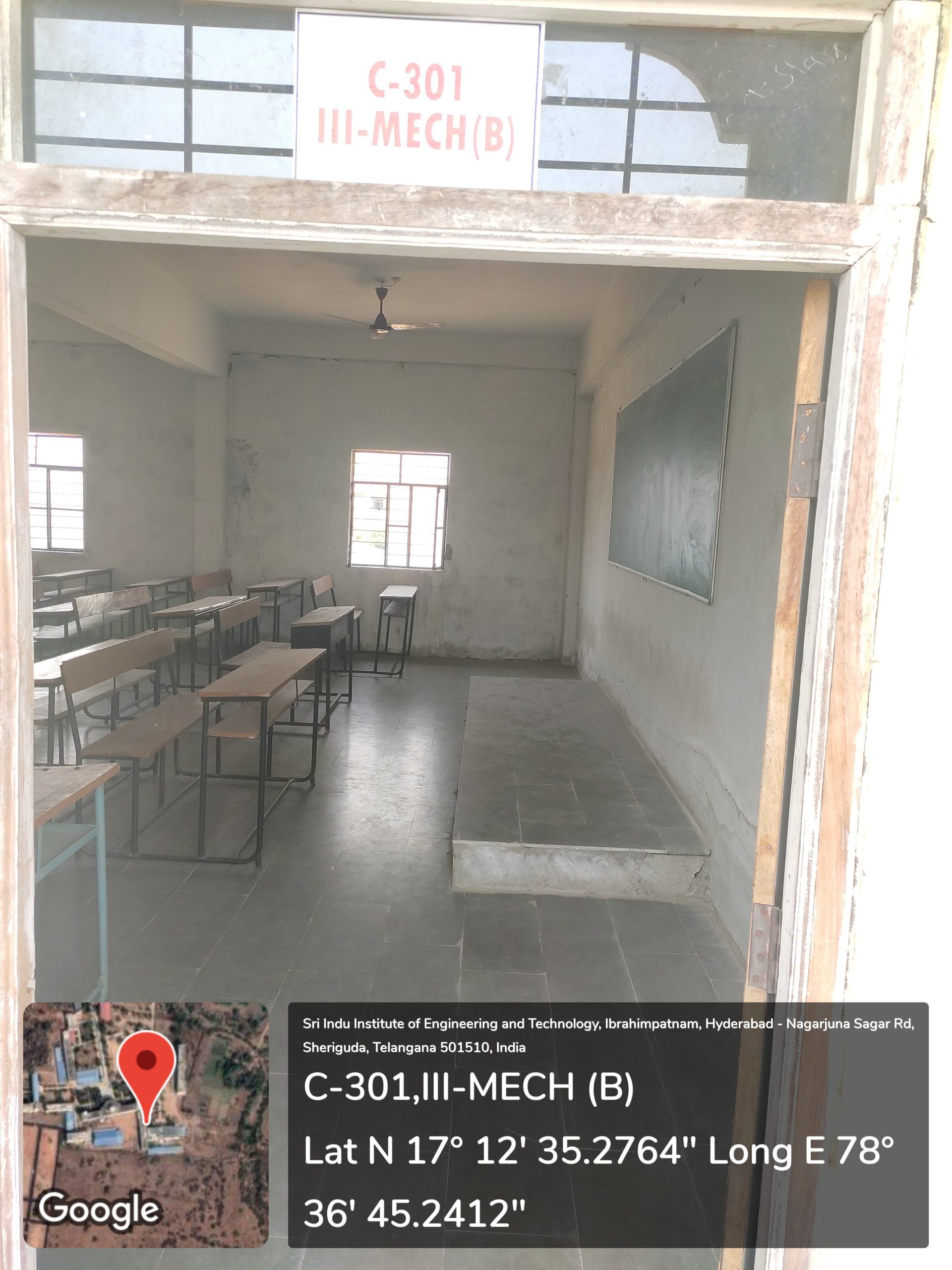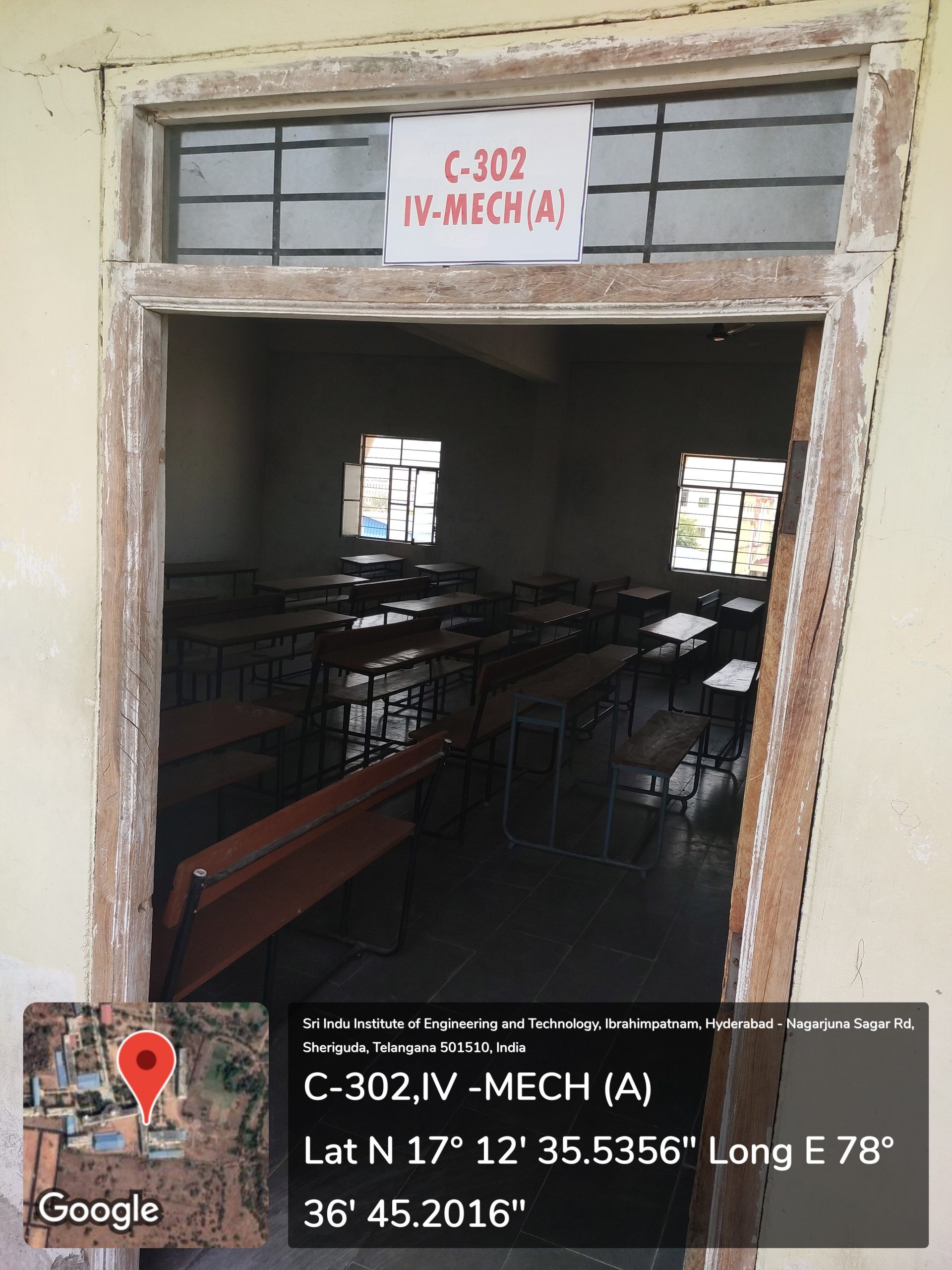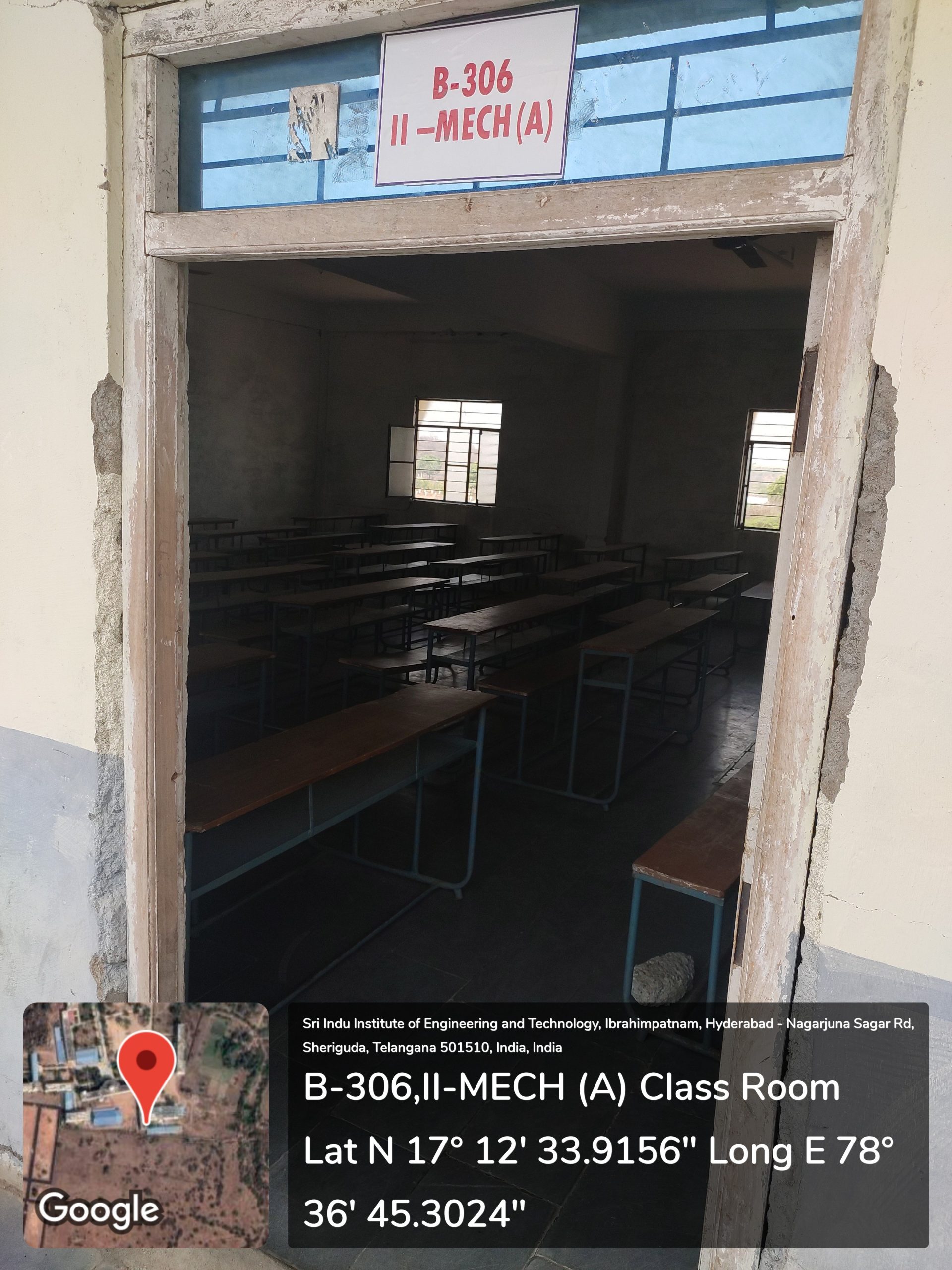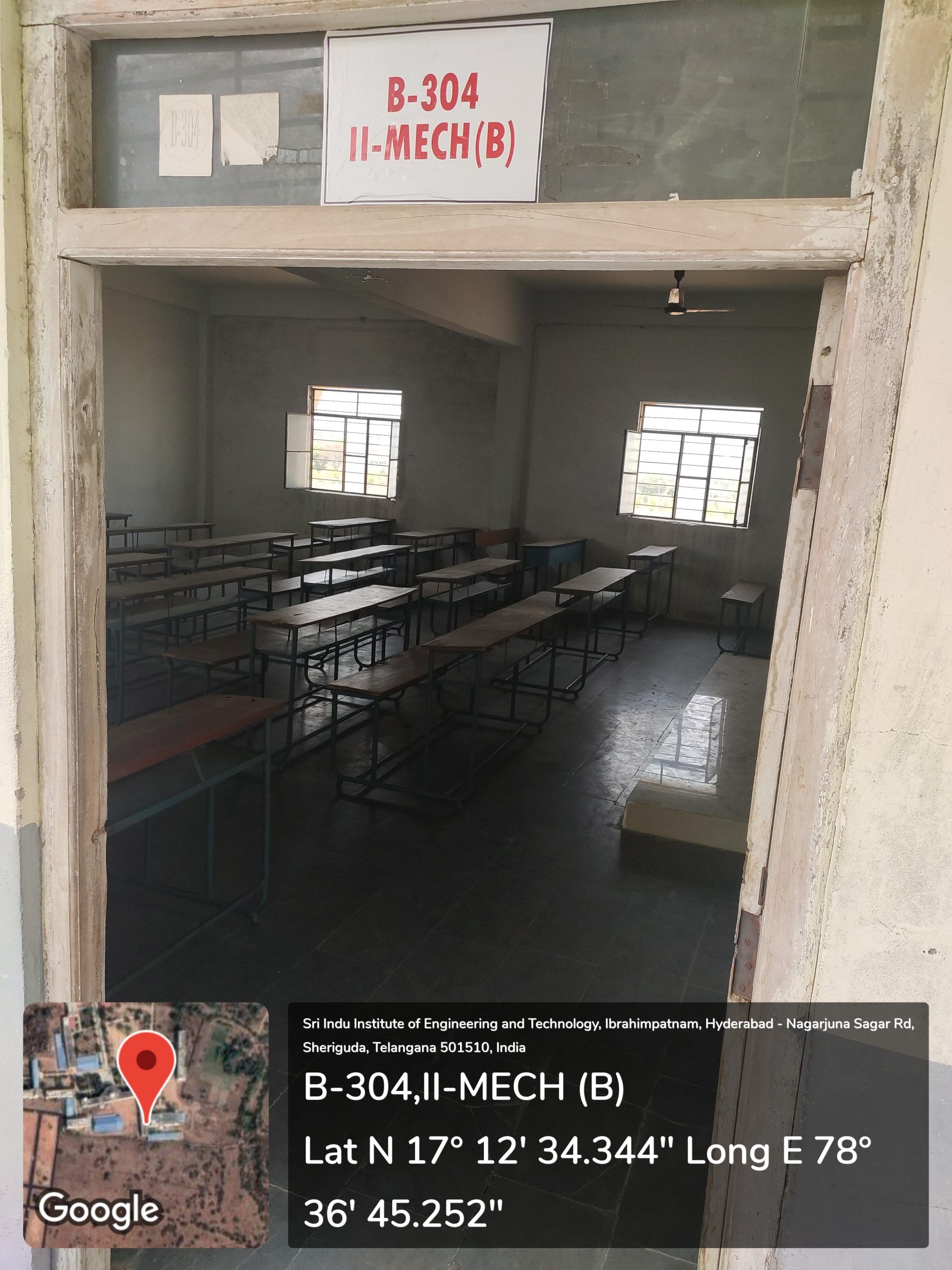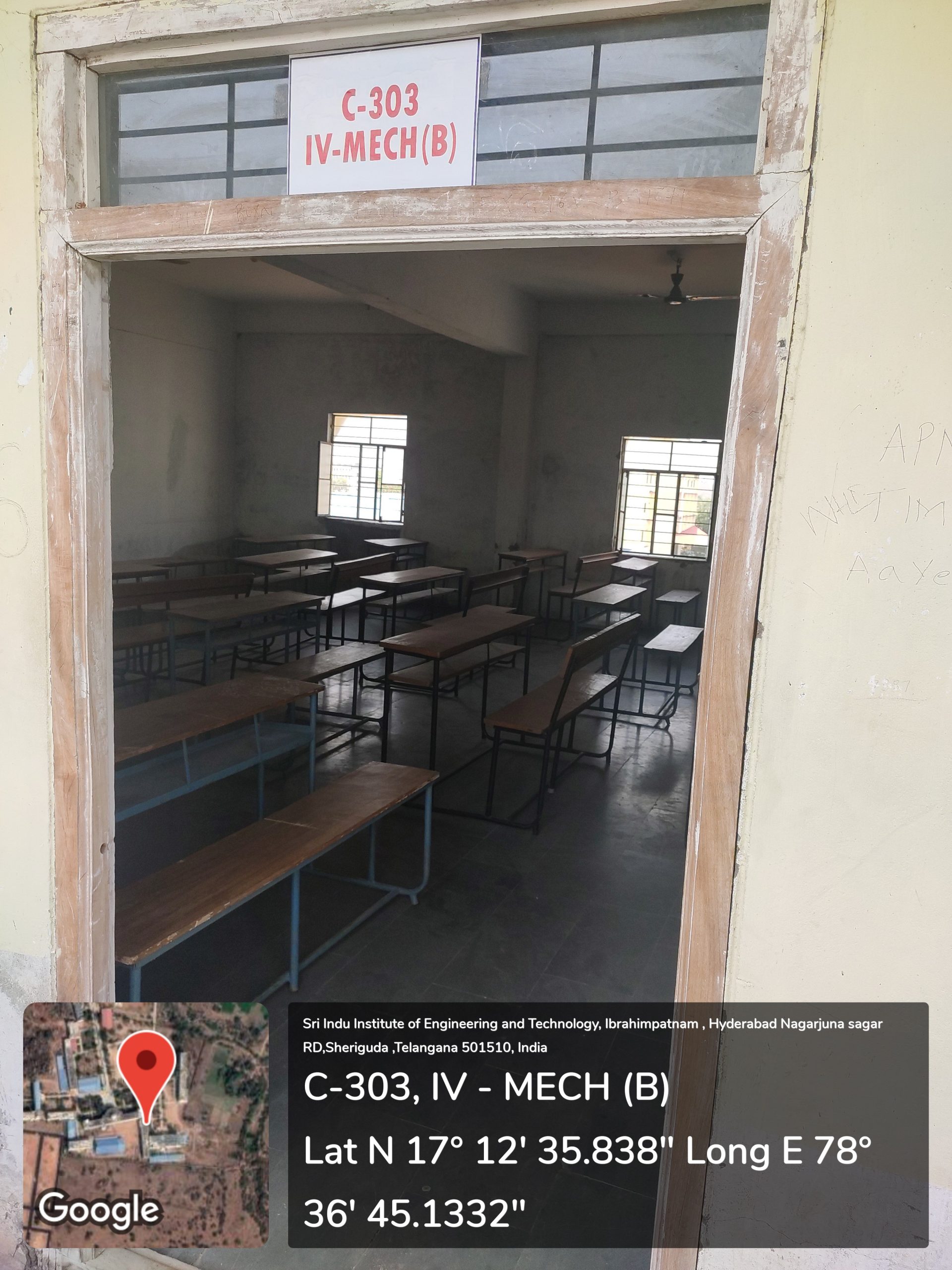Department of Mechanical Engineering Labs
Labs For I Year I & II Semester
Objectives of the lab
Engineering workshop is a basic practical skill lab common for all branches of engineering aimed to gain a good basic workshop knowledge required for production of various engineering objects. It provides hands on experience about the use of different engineering material tools, equipments and processes common for various engineering fields such as carpentry, welding, foundry and wiring.
List of Experiments
1. Trades for Exercises
At least two exercises from each trade
- Carpentry – (T-Lap Joint, Dovetail Joint, Mortise & Tenon Joint)
- Fitting – (V-Fit, Dovetail Fit & Semi-circular fit)
- Tin-Smithy – (Square Tin, Rectangular Tray & Conical Funnel)
- Foundry – (Preparation of Green Sand Mould using Single Piece and Split Pattern)
- Welding Practice – (Arc Welding & Gas Welding)
- House-wiring – (Parallel & Series, Two-way Switch and Tube Light)
- Black Smithy – (Round to Square, Fan Hook and S-Hook)
2. Trades for Demonstration & Exposure
Plumbing, Machine Shop, Metal Cutting (Water Plasma), Power tools in construction and Wood Working

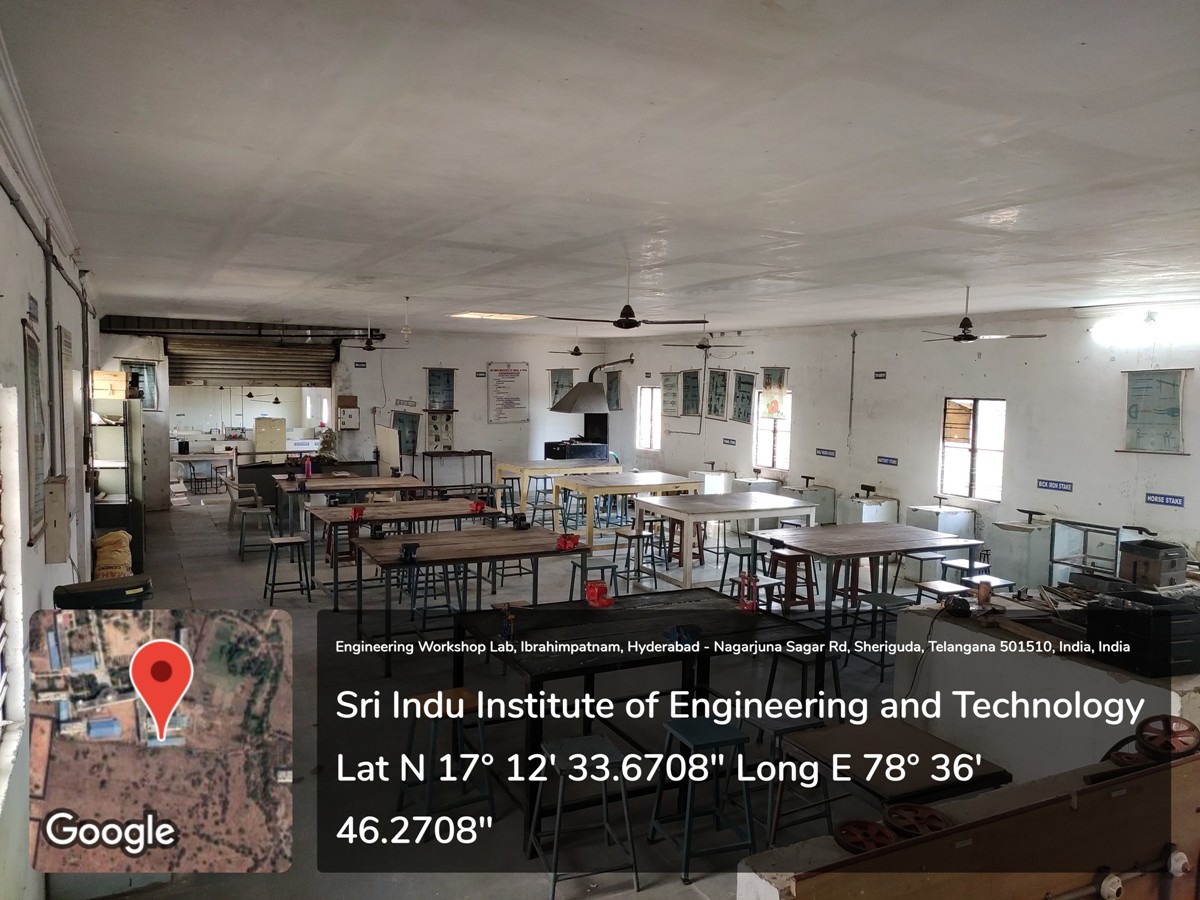
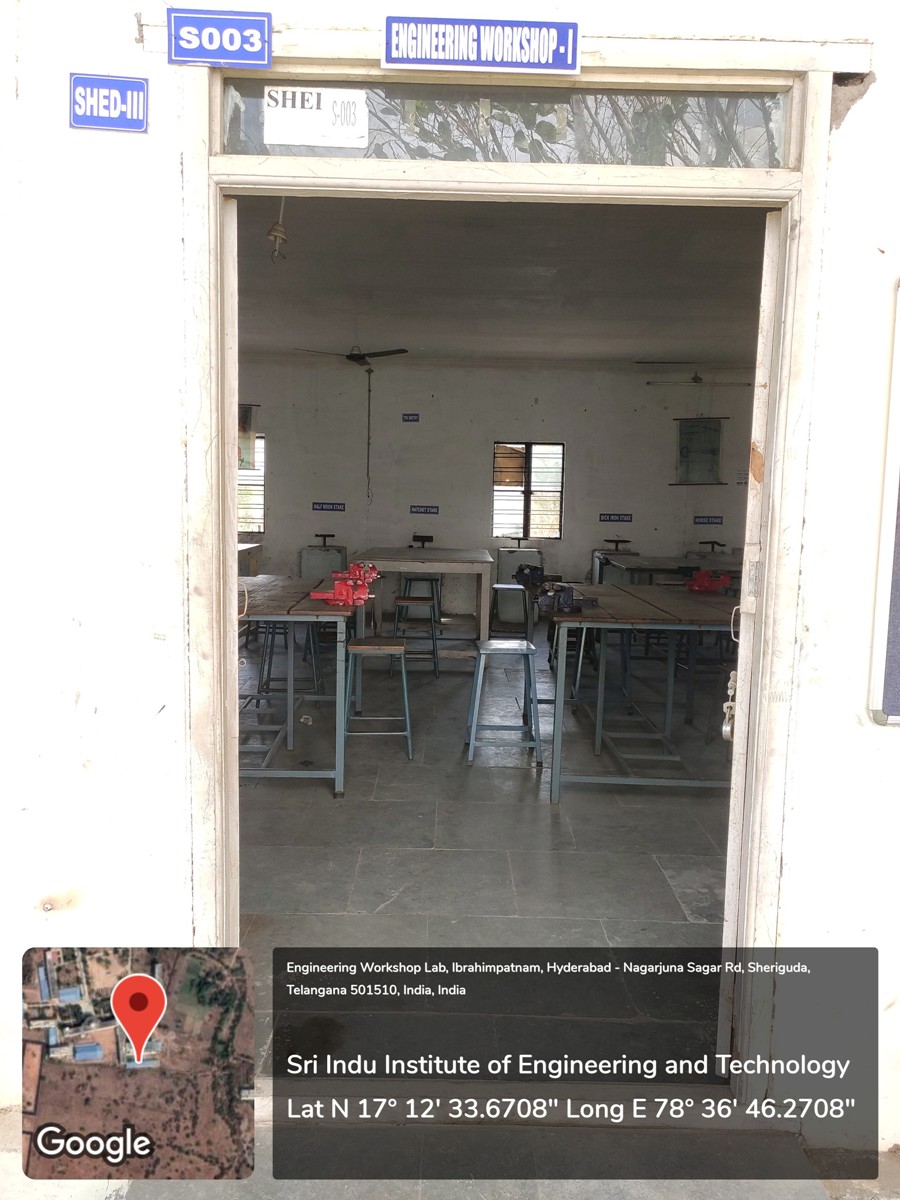
Labs For II Year I Semester
Objectives of the lab
The objective of this lab is to provide about different processes like casting, welding, forming, forging and use of various tools and equipment to the students to acquire broad knowledge and working skills.
List of Experiments
I. Metal Casting Lab
- Pattern Design and making - for one casting drawing.
- Sand properties testing - Exercise -for strengths, and permeability – 1
- Moulding Melting and Casting - 1 Exercise
II. Welding Lab
- ARC Welding Lap & Butt Joint - 2 Exercises
- Spot Welding - 1 Exercise
- TIG Welding - 1 Exercise
- Plasma welding and Brazing - 2 Exercises (Water Plasma Device)
III. Mechanical Press Working
- Blanking & Piercing operation and study of simple, compound and progressive press tool.
- Hydraulic Press: Deep drawing and extrusion operation.
- Bending and other operations
IV. Processing of Plastics
- Injection Moulding
- Blow Moulding
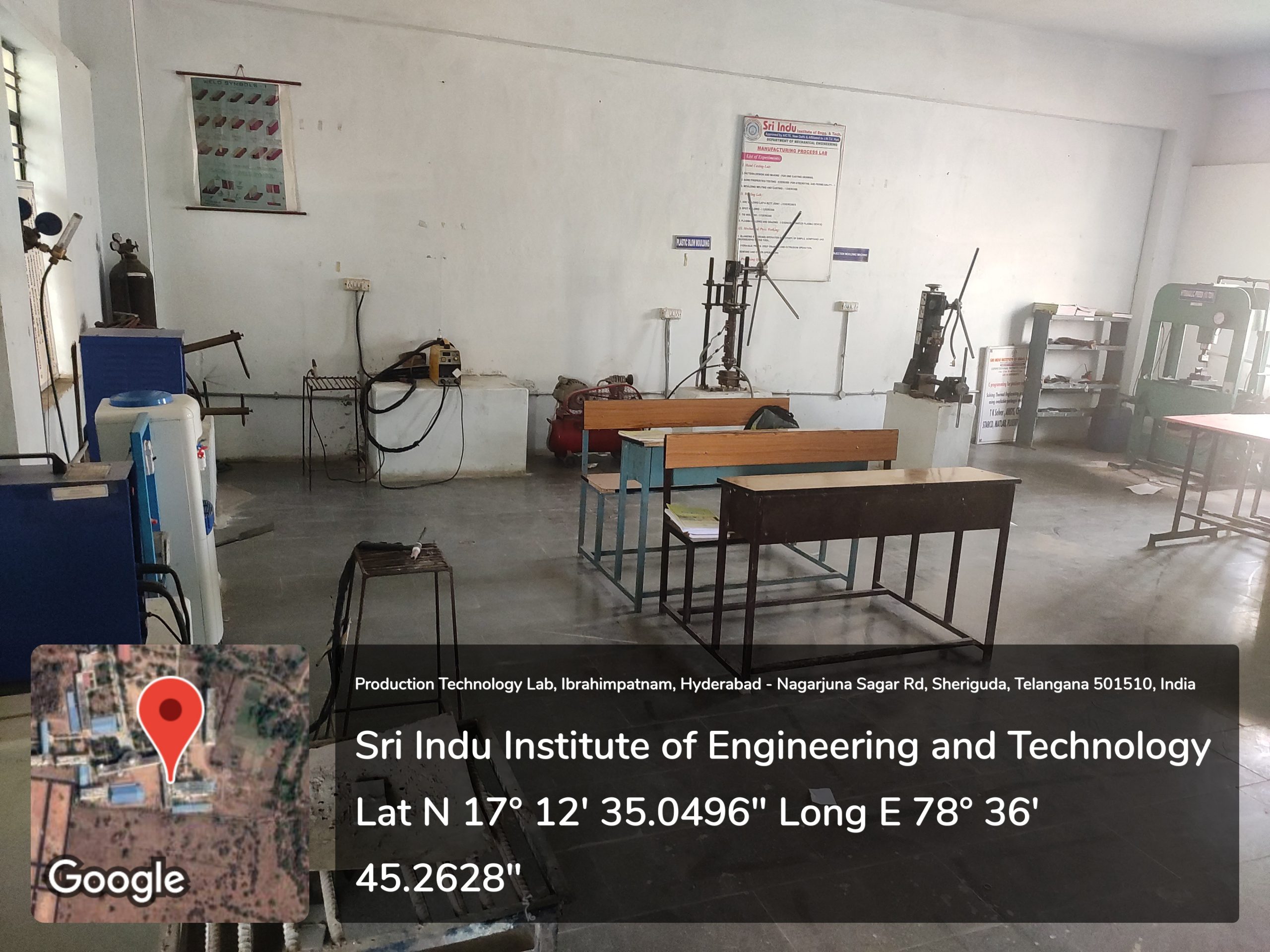


Objectives of the lab
To familiarize with the standard conventions for different materials and machine parts in working drawings. To make part drawings including sectional views for various machine elements. To prepare assembly drawings given the details of part drawings.
List of Experiments
I. Drawing of Machine Elements and simple parts
Selection of Views, additional views for the following machine elements and parts with every drawing proportion.
- Popular forms of Screw threads, bolts, nuts, stud bolts, tap bolts, set screws.
- Keys, cottered joints and knuckle joint.
- Rivetted joints for plates
- Shaft coupling, spigot and socket pipe joint.
- Journal, pivot and collar and foot step bearings.
II. Assembly Drawings
Drawings of assembled views for the part drawings of the following using conventions and easy drawing proportions.
- Steam engine parts – stuffing boxes, cross heads, Eccentrics.
- Machine tool parts: Tail stock, Tool Post, Machine Vices.
- Other machine parts - Screws jacks, Petrol engine connecting rod, Plummer block, Fuel Injector
- Valves - Steam stop valve, spring loaded safety valve, feed check valve and air cock.
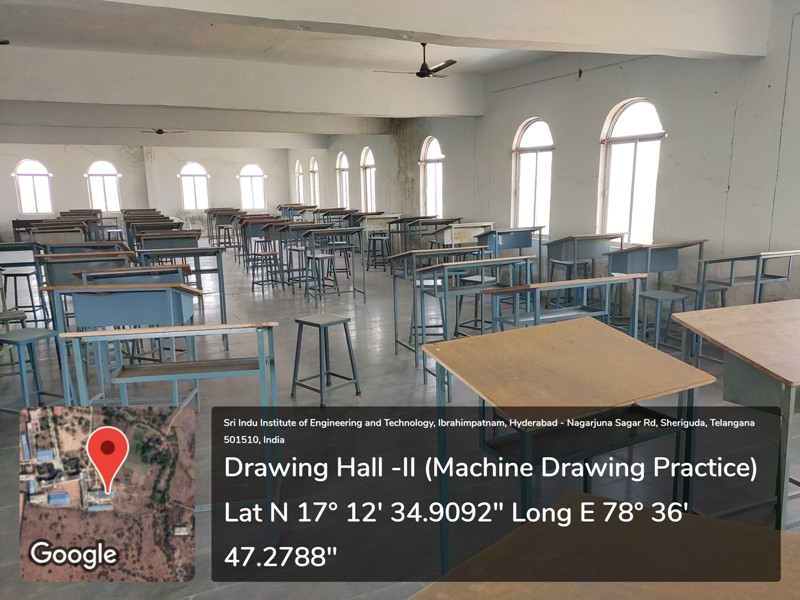


Material Science
Objectives of the lab
The objective of this laboratory is to prepare and Study the Microstructure of Crystal Models for Simple Cubic, Body Centered Cubic, Face Centered Cubic, and Hexagonal Close Packed Structures & Various Metal Objects/Specimens.
List of Experiments
- Preparation and study of crystal models for simple cubic, body centred cubic, face centred cubic and hexagonal close packed structures.
- Preparation and study of the Microstructure of pure metals like Iron, Cu and Al.
- Preparation and study of the Microstructure of Mild steels, low carbon steels, high – C steels.
- Study of the Microstructures of Cast Irons.
- Study of the Microstructures of Non-Ferrous alloys.
- Hardenability of steels by Jominy End Quench Test.
Mechanics of Solids Lab
Objectives of the lab
The objective of this lab is to learn the fundamental concepts of stress, strain, and deformation of solids with applications to bars, beams, and columns. And to study the strength of various engineering materials by performing various tests such as tension test, Bending tests on Simple supported beam & Cantilever beam, Torsion test, Brinell hardness test, Izod Impact test.
List of Experiments
- Direct tension test
- Bending test on Simple supported beam
- Bending test on Cantilever beam
- Torsion test
- Brinell hardness test/ Rockwell hardness test
- Test on springs
- Izod Impact test/ Charpy Impact test
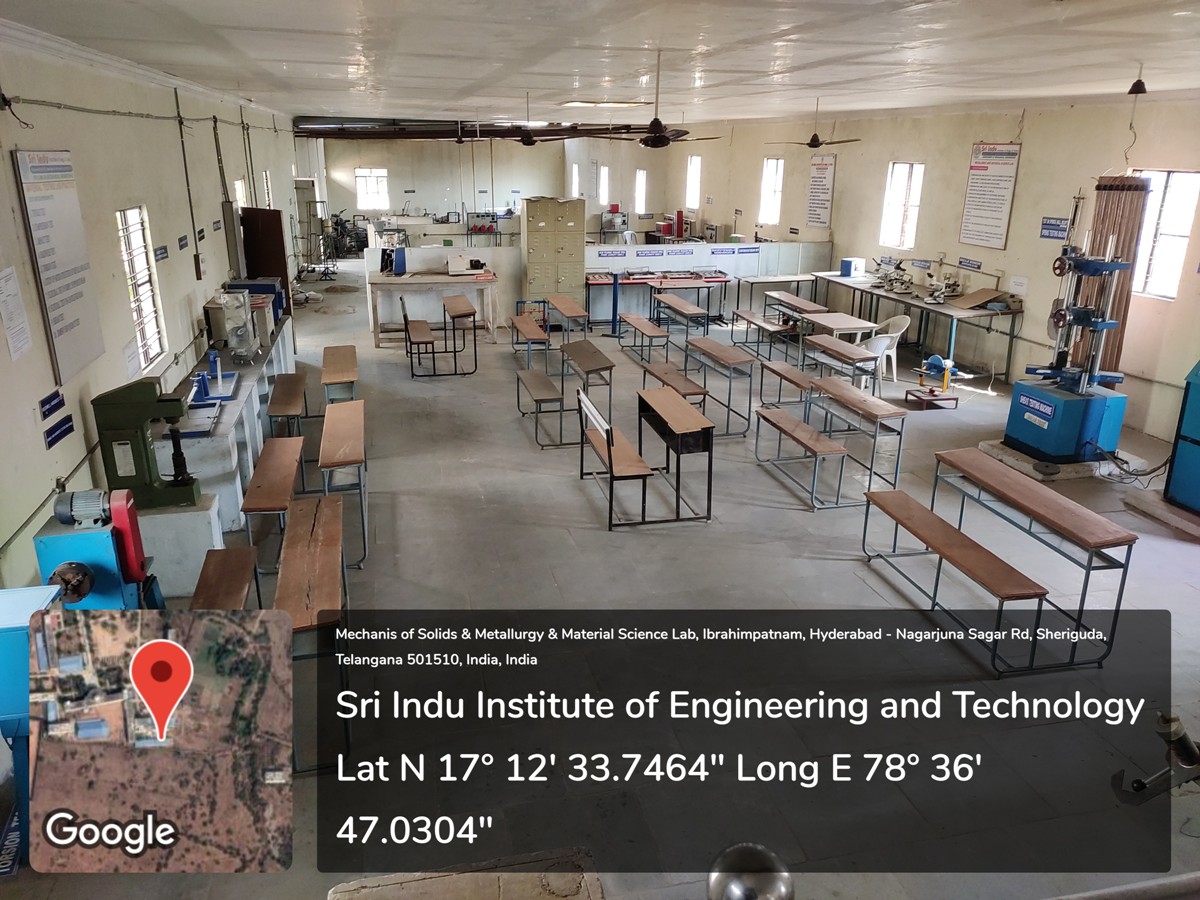
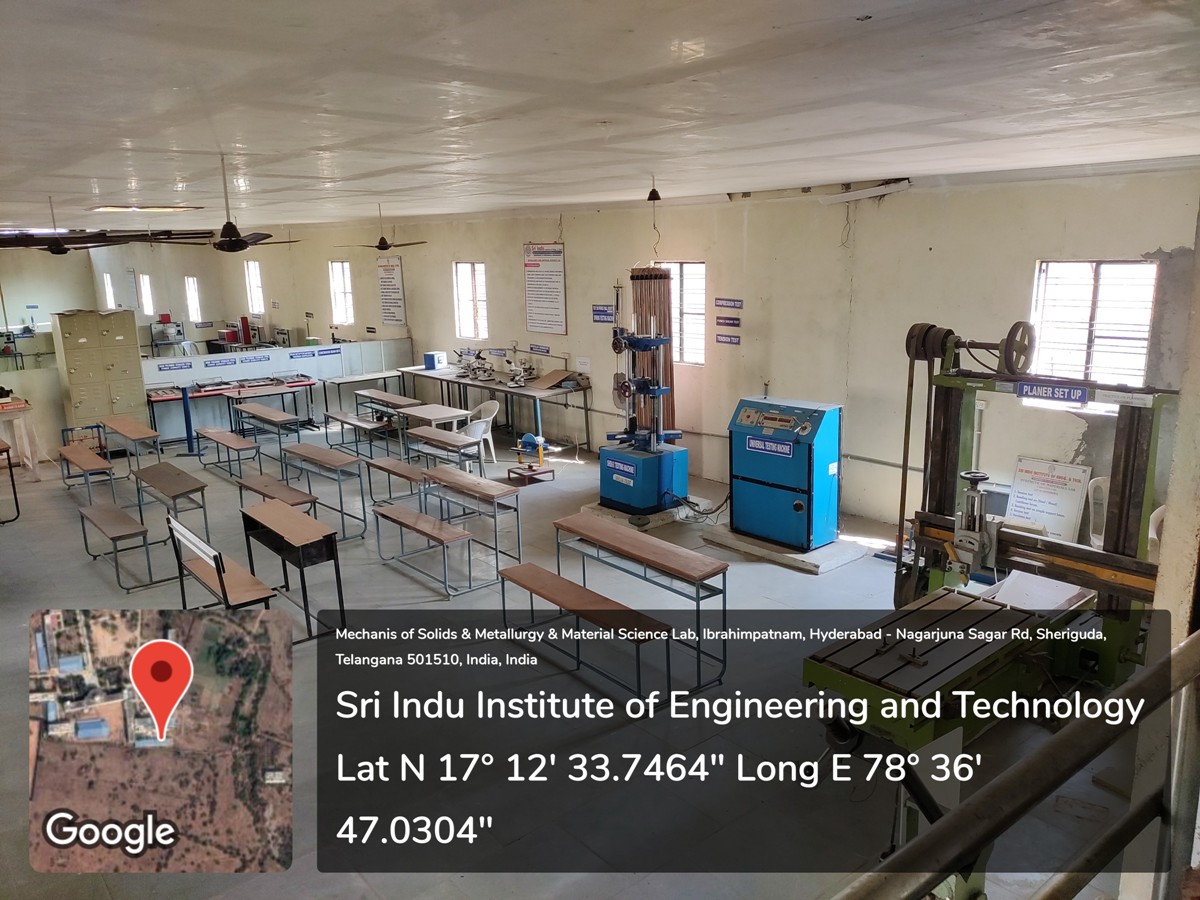
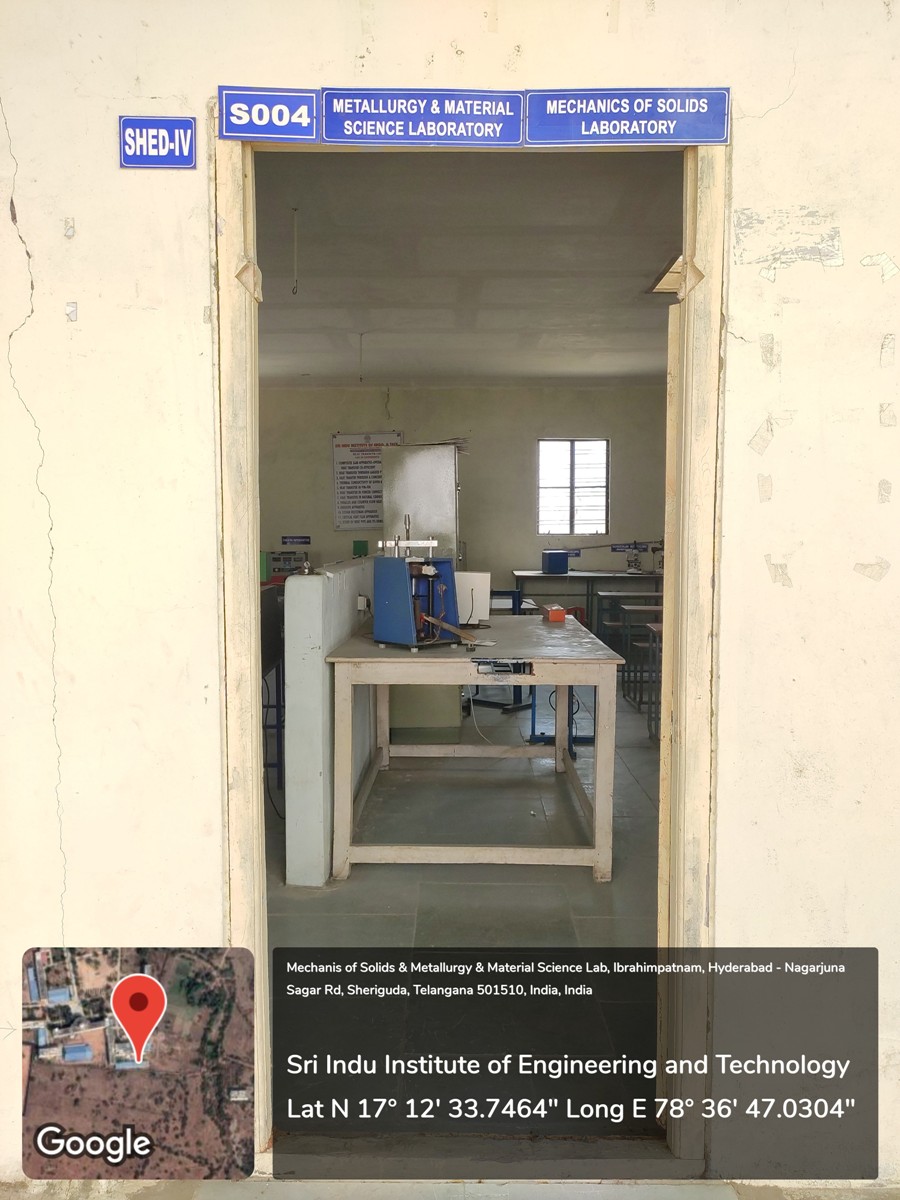
Labs For II Year II Semester
Objectives of the lab
To understand the basic principles of fluid mechanics. To obtain the velocity and pressure variations in various types of simple flows . To understand boundary layer concepts and flow through pipes. To evaluate the performance of hydraulic turbines. Interpret the results obtained in the laboratory for various experiments
List of Experiments
- Impact of jets on Vanes.
- Performance Test on Pelton Wheel.
- Performance Test on Francis Turbine.
- Performance Test on Kaplan Turbine.
- Performance Test on Single Stage Centrifugal Pump.
- Performance Test on Multi Stage Centrifugal Pump.
- Performance Test on Reciprocating Pump.
- Calibration of Venturimeter.
- Calibration of Orifice meter.
- Determination of friction factor for a given pipe line.
- Determination of loss of head due to sudden contraction in a pipeline.
- Verification of Bernoulli’s Theorems.
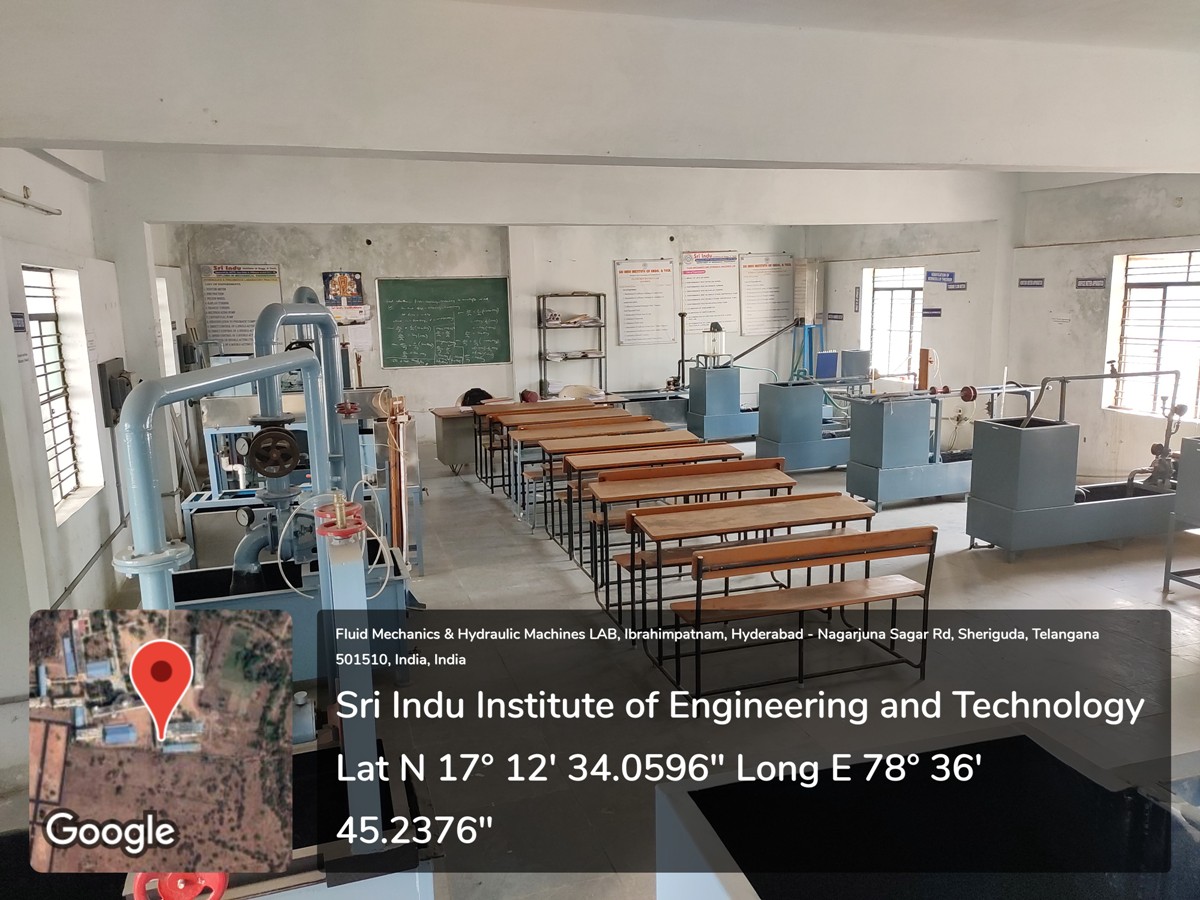
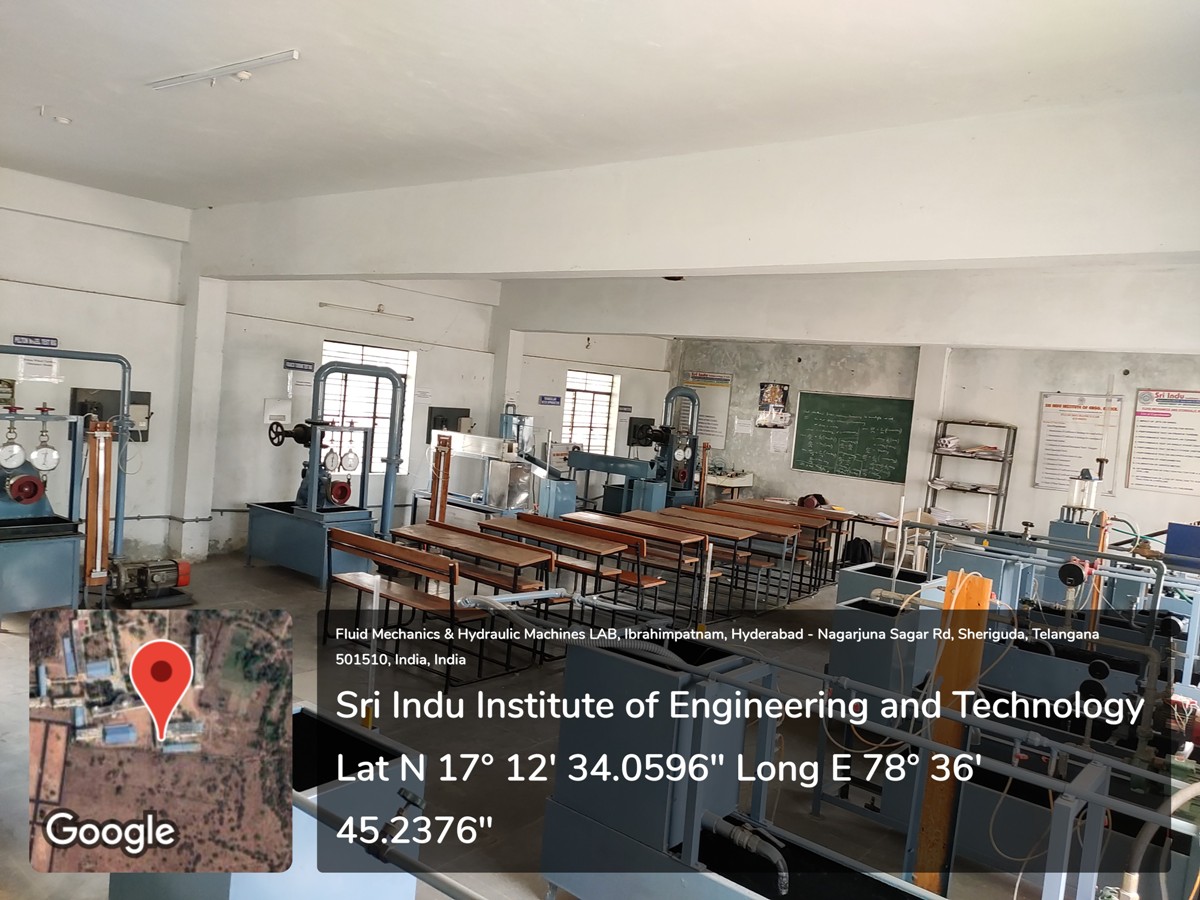
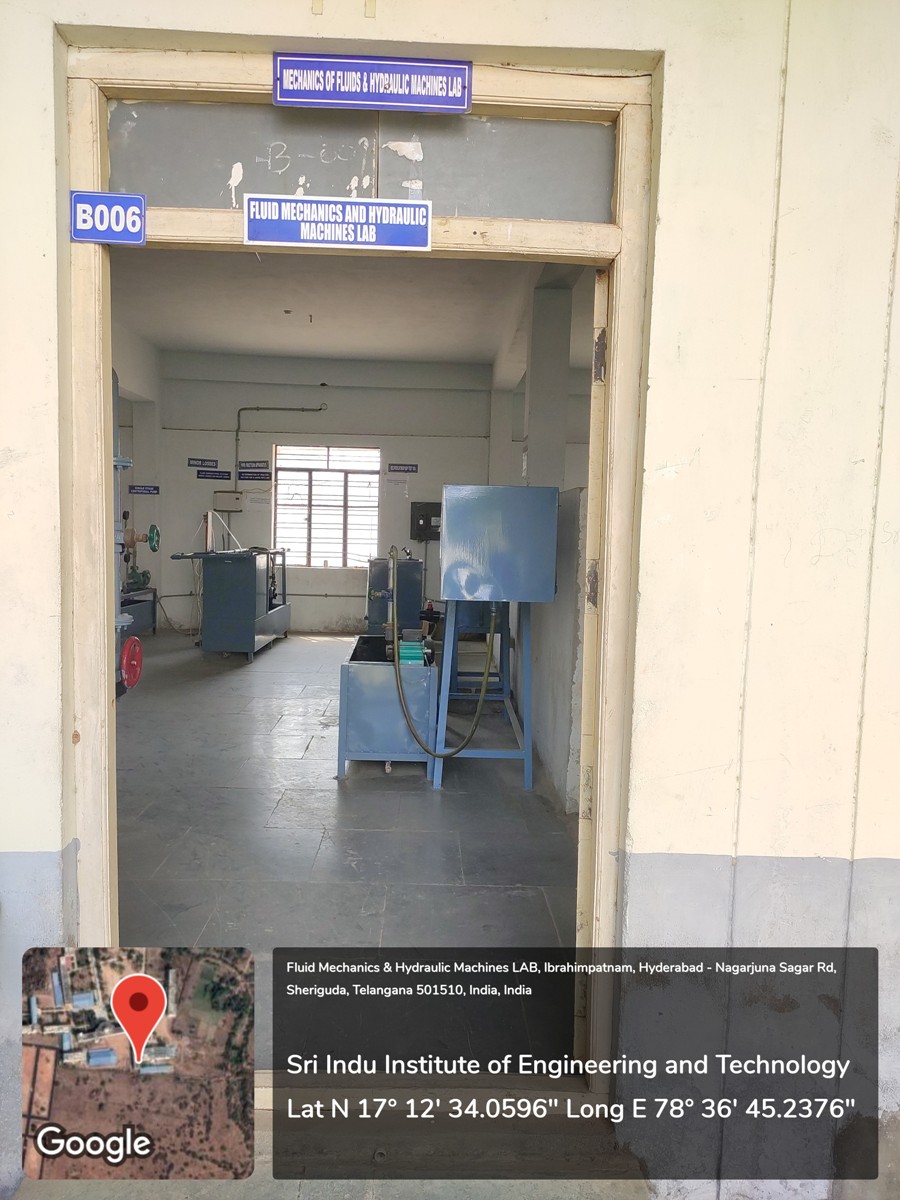
Objectives of the lab
The students study to Characterize and calibrate measuring devices. Identify and analyze errors in measurement. And also learn Calibration of Pressure Gauges, temperature, LVDT, capacitive transducer, rotameter.
List of Experiments
- Calibration of Pressure Gauges
- Calibration of transducer for temperature measurement.
- Study and calibration of LVDT transducer for displacement measurement.
- Calibration of strain gauge for temperature measurement.
- Calibration of thermocouple for temperature measurement.
- Calibration of capacitive transducer for angular displacement.
- Study and calibration of photo and magnetic speed pickups for the measurement of speed.
- Calibration of resistance temperature detector for temperature measurement.
- Study and calibration of a rotameter for flow measurement.
- Study and use of a Seismic pickup for the measurement of vibration amplitude of an engine bed At various loads.
- Study and calibration of McLeod gauge for low pressure.
- Measurement and control of Pressure of a process using SCADA system.
- Measurement and control of level in a tank using capacitive transducer with SCADA.
- Measurement and control of temperature of a process using resistance temperature detector with SCADA.
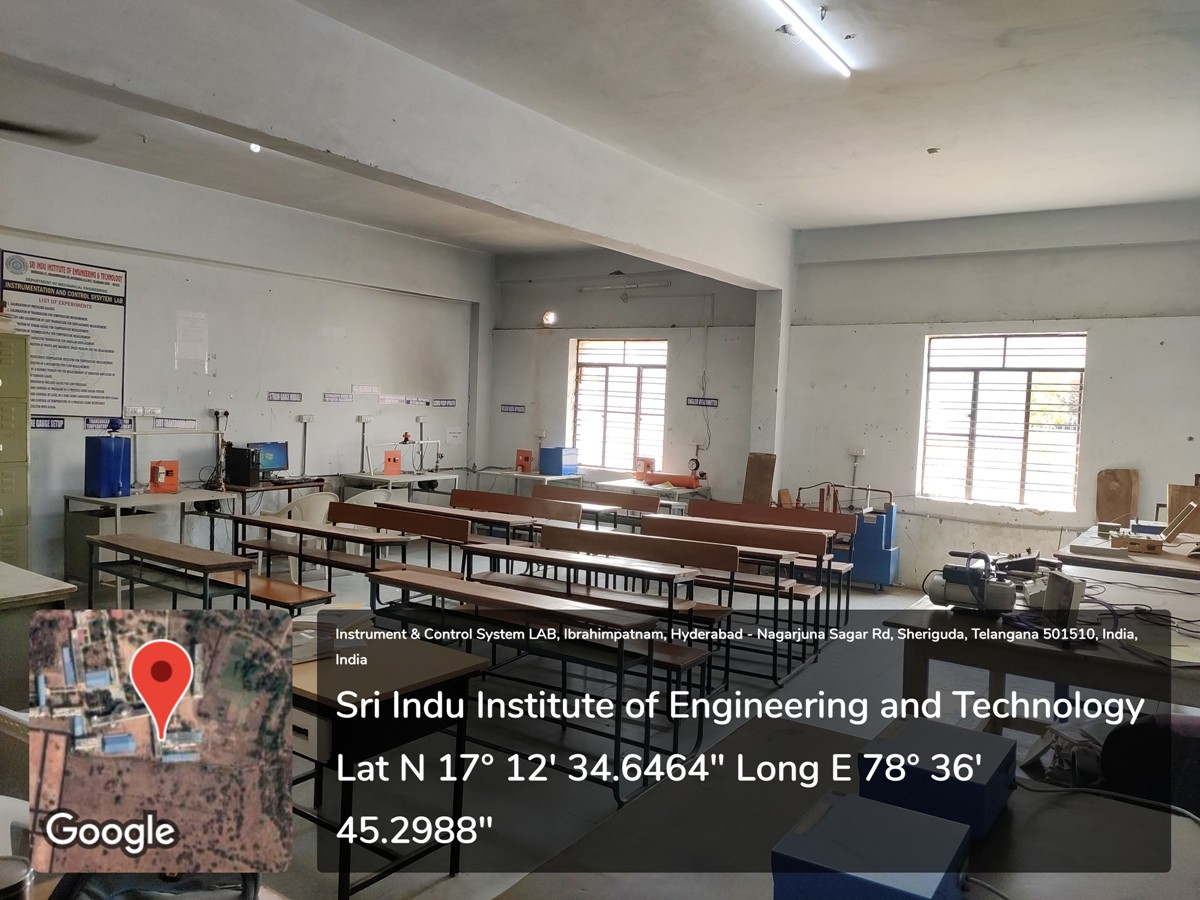
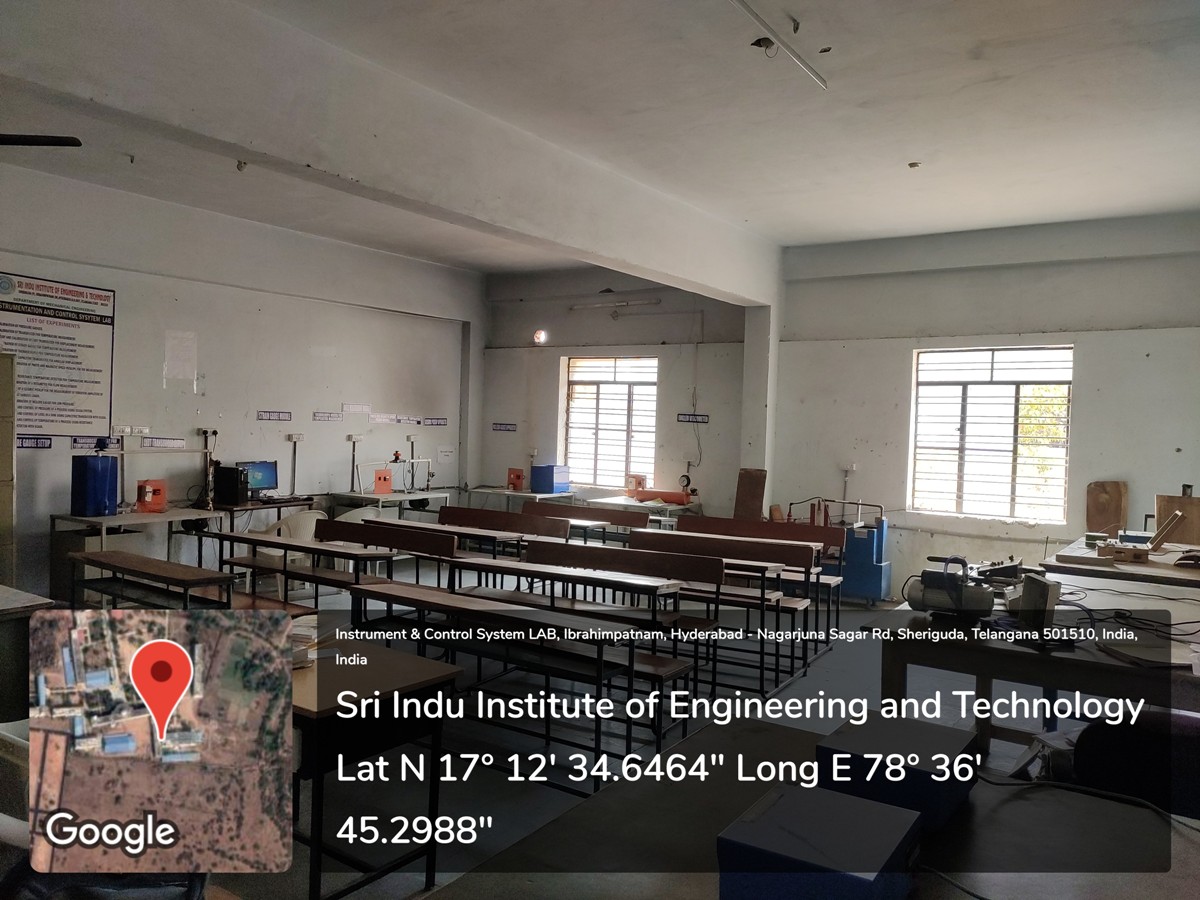
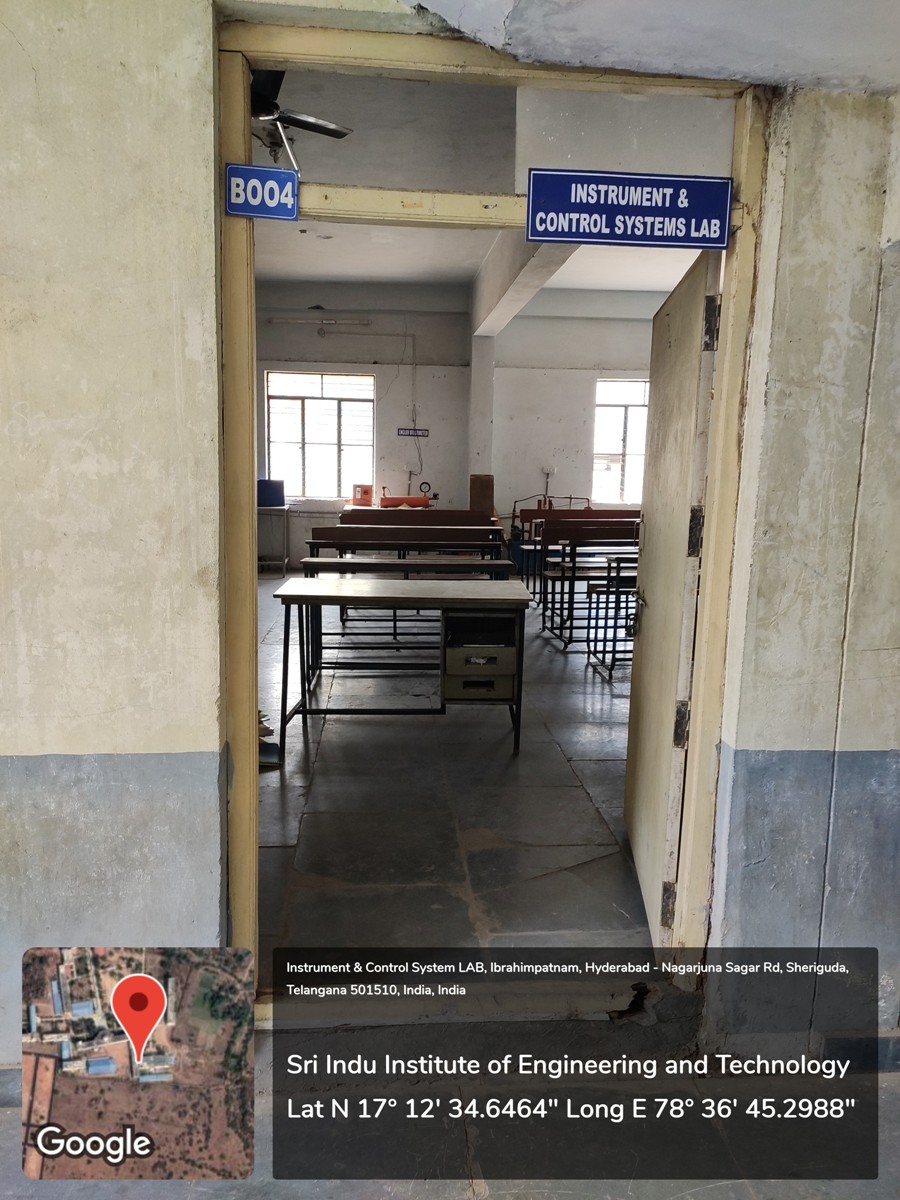
Labs For III Year I Semester
Objectives of the lab
The Objective of this lab is to make the students to understand and know the actual working principles of Internal combustion engines such as Two stroke, four stroke of Petrol and diesel engines, The multi cylinder Reciprocating Air Compressor test rig, This laboratory also deals with the study of Engine assembly, study of boilers which are used in Thermal power plant units. It also helps to know how the efficiencies such as mechanical efficiency and Thermal efficiency of overall performance of the Engines are practically performed and conducted.
List of Experiments
- I.C. Engines Valve / Port Timing Diagrams
- I.C. Engines Performance Test for 4 Stroke SI engines
- I.C. Engines Performance Test for 2 Stroke SI engines
- I.C. Engines Morse, Retardation, Motoring Tests
- I.C. Engine Heat Balance – CI/SI Engines
- I.C. Engines Economical speed Test on a SI engine
- I.C. Engines effect of A/F Ratio in a SI engine
- Performance Test on Variable Compression Ratio Engine
- IC engine Performance Test on a 4S CI Engine at constant speed
- Volumetric efficiency of Air – Compressor Unit
- Dis-assembly / Assembly of Engines
- Study of Boilers
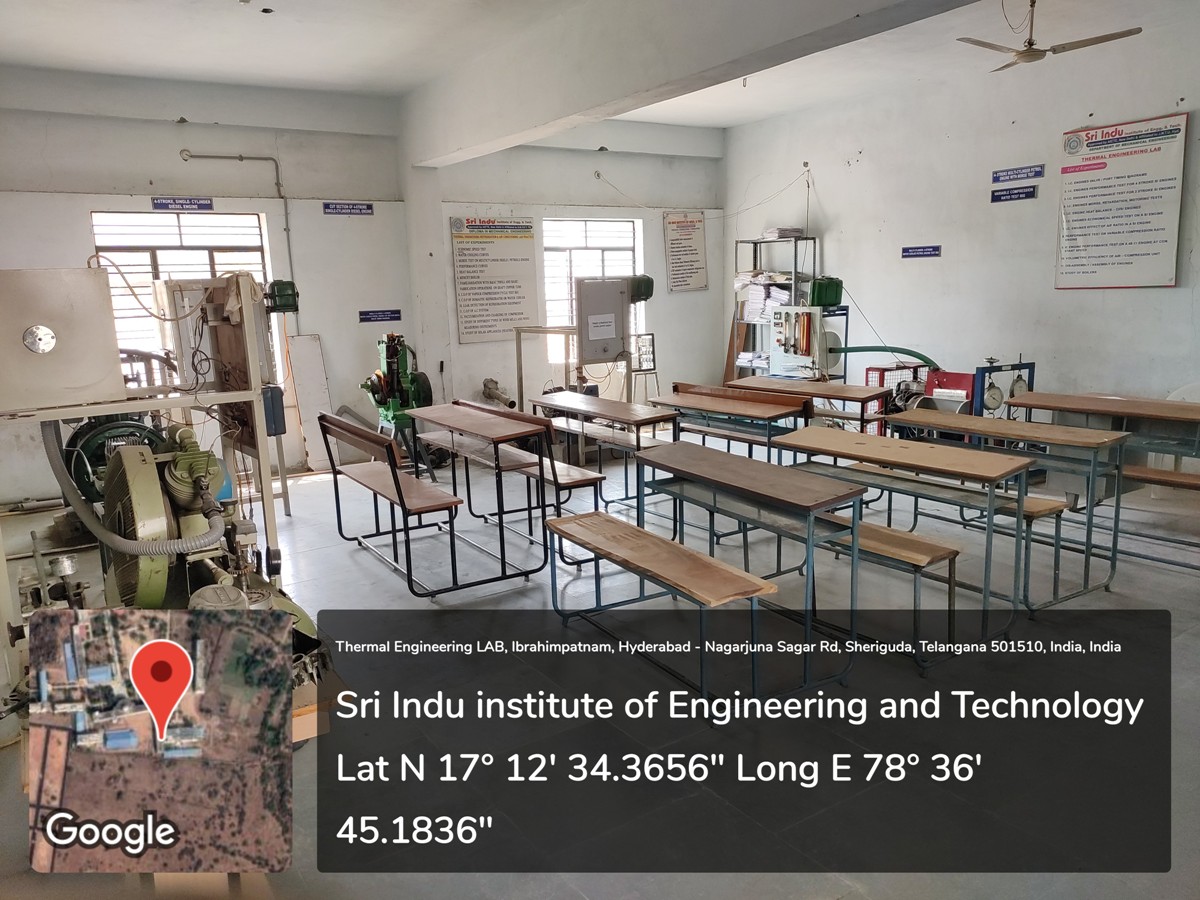

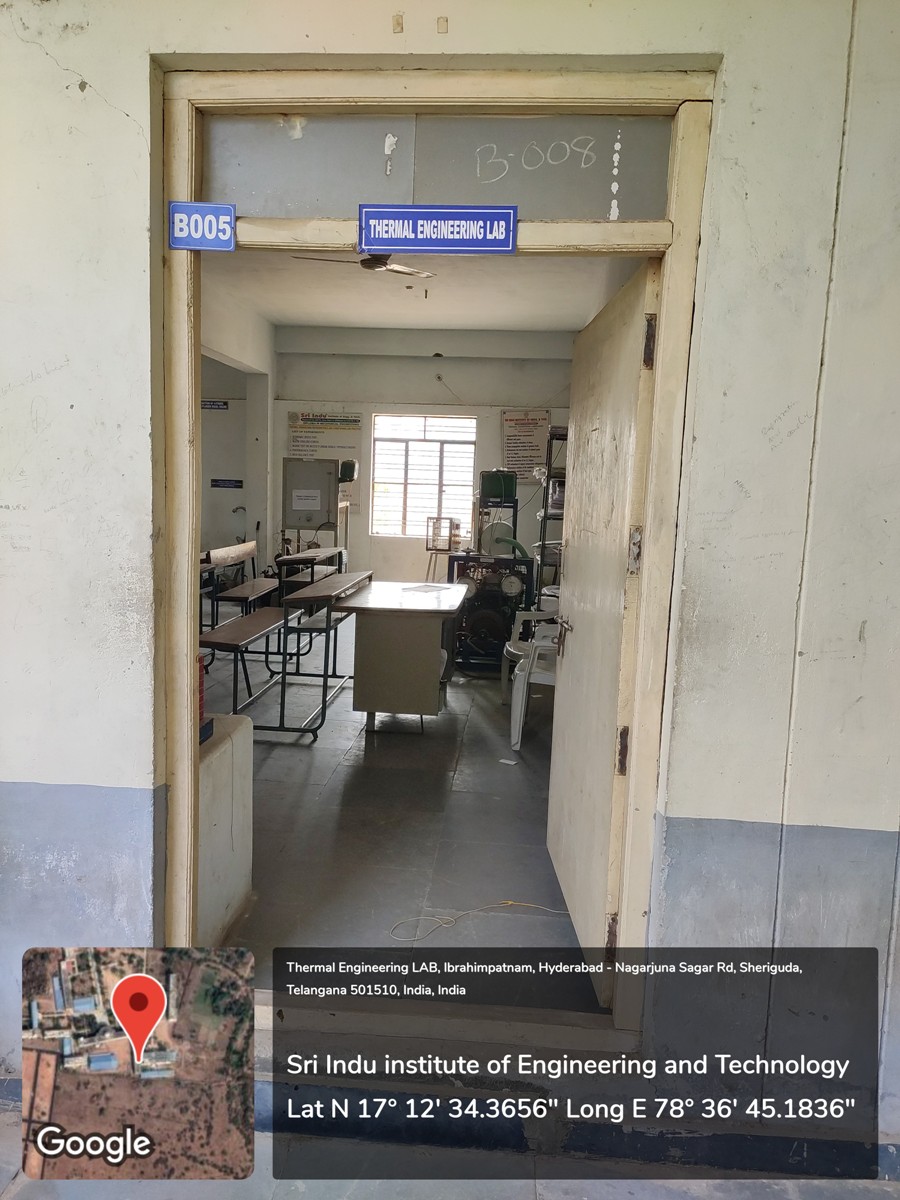
Objectives of the lab
The objective of this lab is to study the various instruments used to measure physical attributes of machine components like circularity, angularity, parallelism etc. To import practical exposure to the Machine tools and also to conduct experiments to understand its working.
List of Experiments
- Step turning on lathe machine
- Taper turning on lathe machine
- Thread cutting and knurling on lathe machine (2 exercises)
- Measurement of cutting forces on lathe
- Machining of holes using Drilling and boring machines.
- Gear cutting on the Milling machine
- Grinding of Tool angles using Cylindrical / Surface Grinding
- Measurement of lengths, heights, diameters by vernier calipers, micrometers.
- Measurement of Diameter of bores by internal micrometers and dial bore indicators.
- Use of gear teeth vernier calipers for checking the chordal addendum and chordal height of the spur gear.
- Angle and taper measurements by bevel protractor and sine bars.
- Thread measurement by 2-wire and 3-wire methods.
- Surface roughness measurement by Tally Surf.
- Use of mechanical comparator

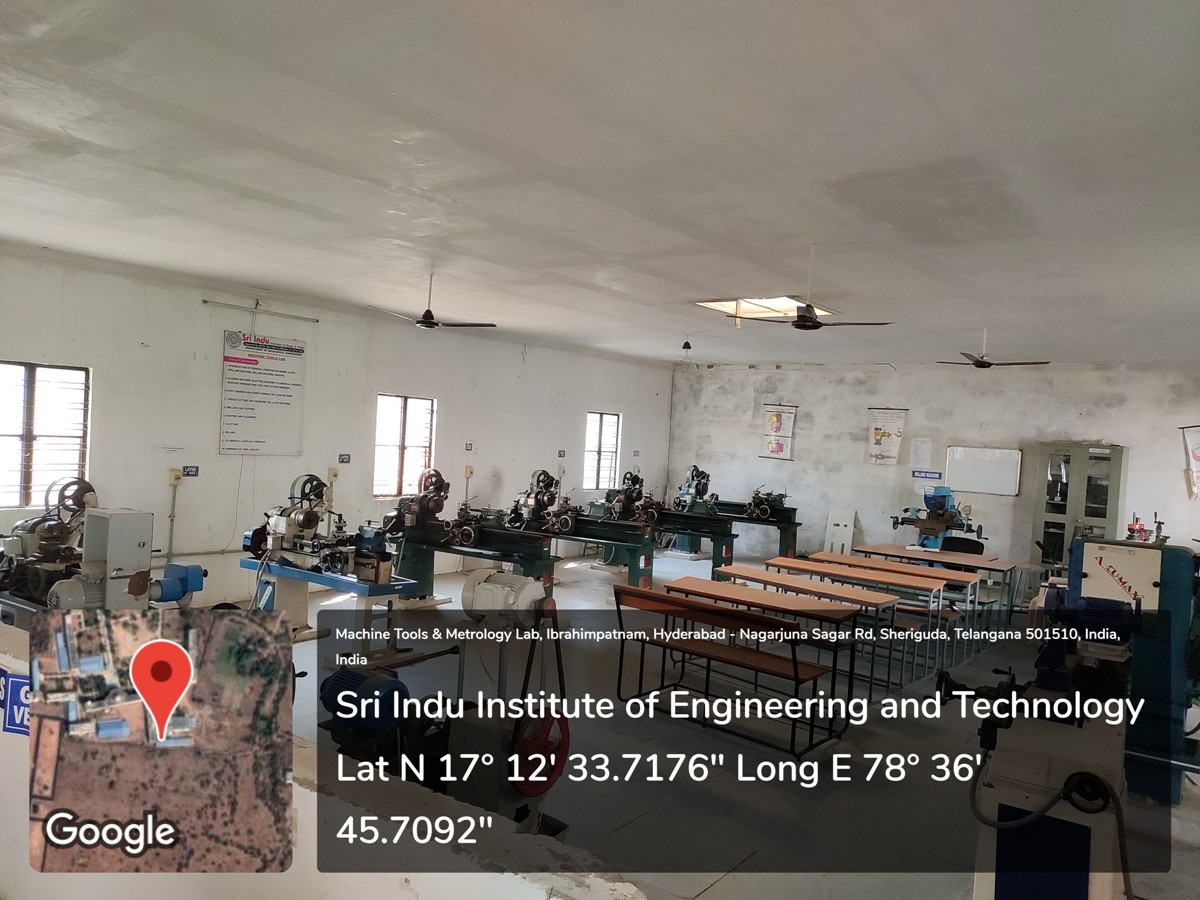
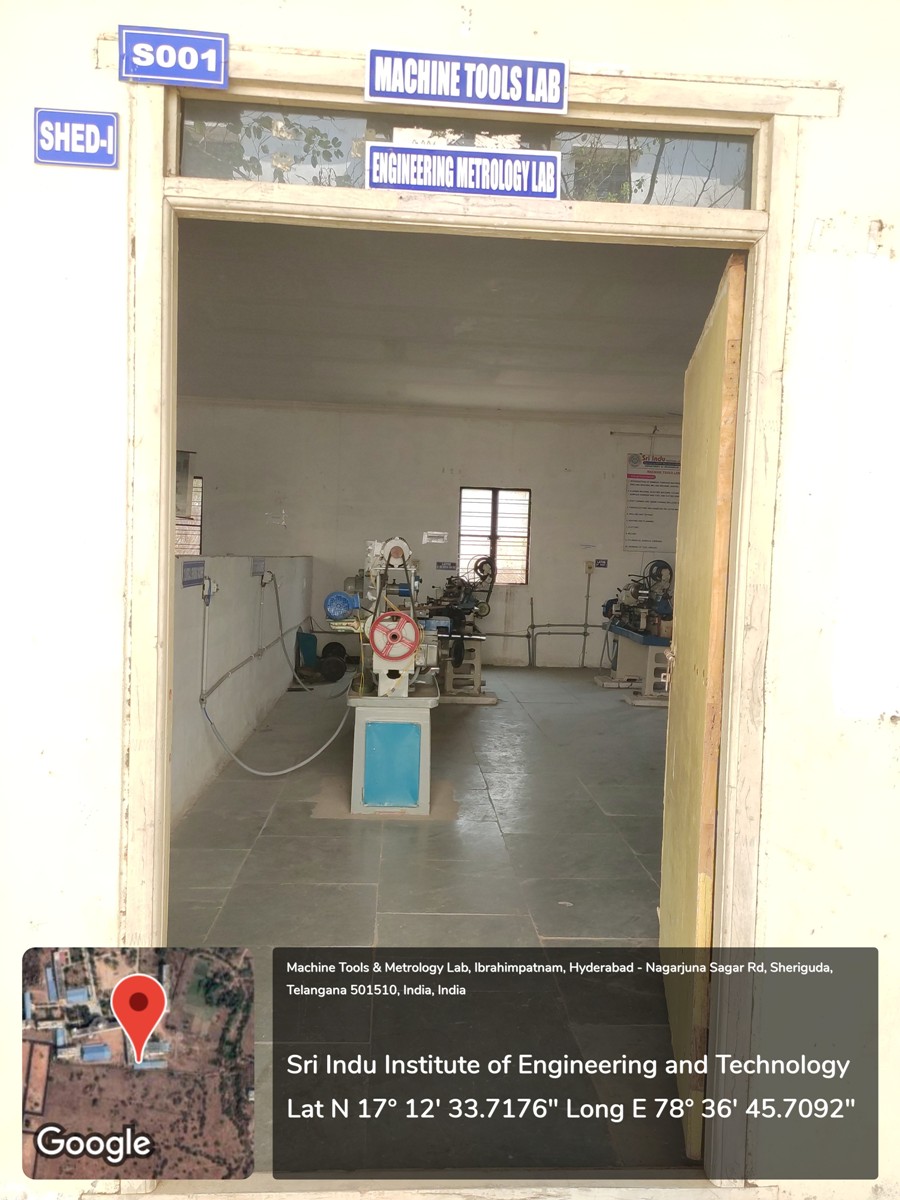
Objectives of the lab
The objective of this lab is to understand the kinematics and dynamics of mechanical elements such as linkages, gears, cams and learn to design such elements to accomplish desired motions or tasks.
List of Experiments
- To determine the state of balance of machines for primary and secondary forces
- To determine the frequency of torsional vibration of a given rod
- Determine the effect of varying mass on the centre of sleeve in porter and proell governor
- Find the motion of the follower if the given profile of the cam
- The balance masses statically and dynamically for single rotating mass systems
- Determine the critical speed of a given shaft for different n-conditions
- For a simple pendulum determine time period and its natural frequency
- For a compound pendulum determine time period and its natural frequency
- Determine the effect of gyroscope for different motions
- Determine time period, amplitude and frequency of undamped free longitudinal vibration of single degree spring mass systems.
- Determine the pressure distribution of lubricating oil at various load and speed of a Journal bearing.
- Determine time period, amplitude and frequency of damped free longitudinal vibration of single degree spring mass systems
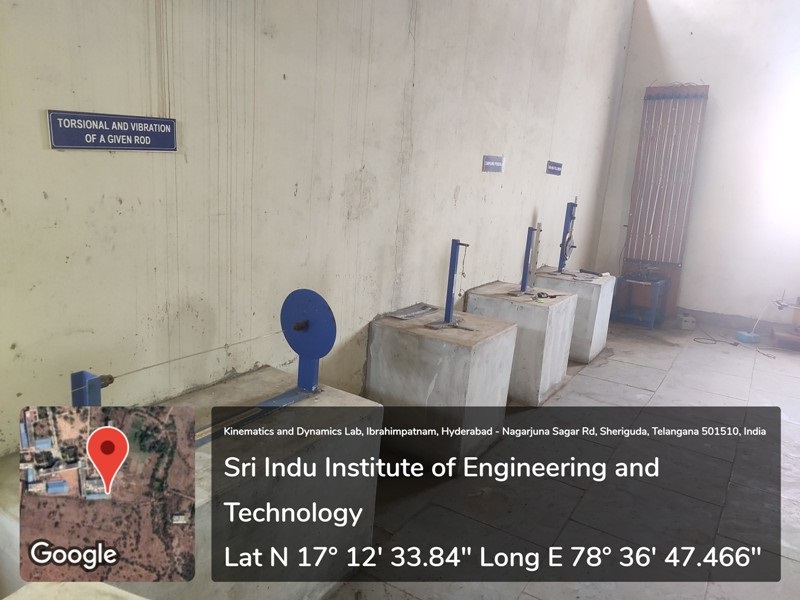
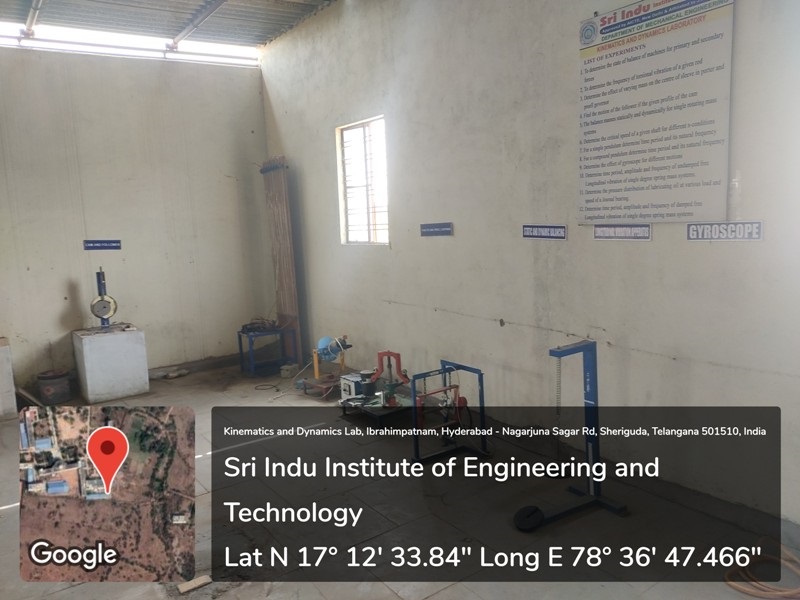
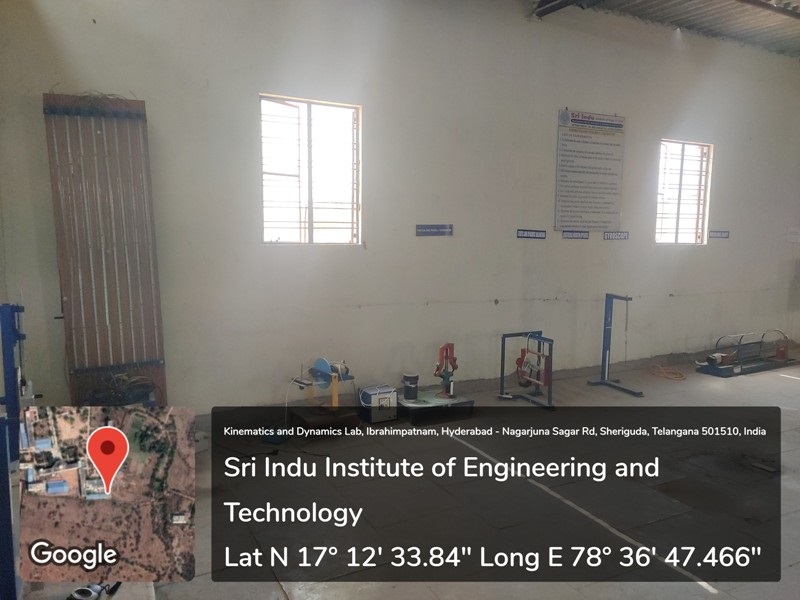
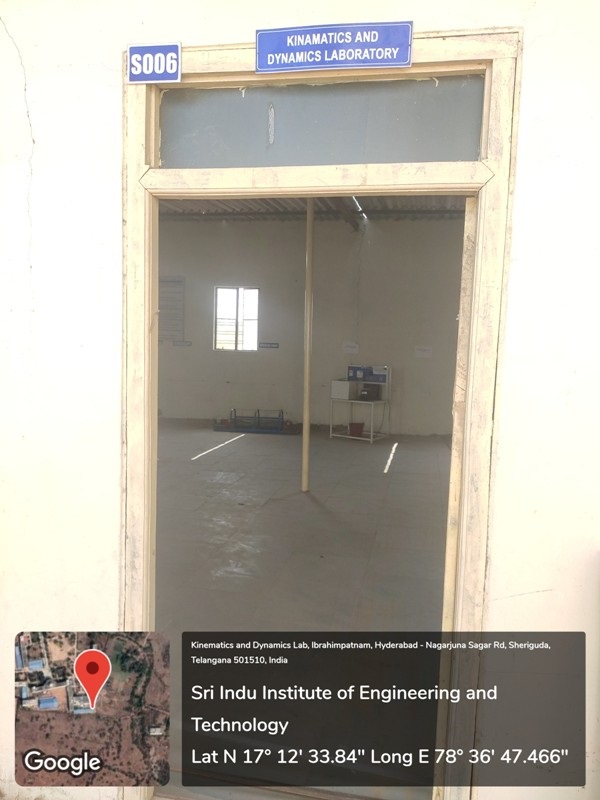
Labs For III Year II Semester
Objectives of the lab
The objective of this lab is to provide basic idea about the various modes of heat transfer that is conduction, convection and radiation through various practical applications
List of Experiments
- Composite Slab Apparatus – Overall heat transfer co-efficient.
- Heat transfer through lagged pipe.
- Heat Transfer through a Concentric Sphere
- Thermal Conductivity of given metal rod.
- Heat transfer in pin-fin
- Experiment on Transient Heat Conduction
- Heat transfer in forced convection apparatus.
- Heat transfer in natural convection
- Parallel and counter flow heat exchanger
- Emissivity apparatus.
- Stefan Boltzman Apparatus.
- Critical Heat flux apparatus.
- Study of heat pipe and its demonstration.
- Film and Drop wise condensation apparatus
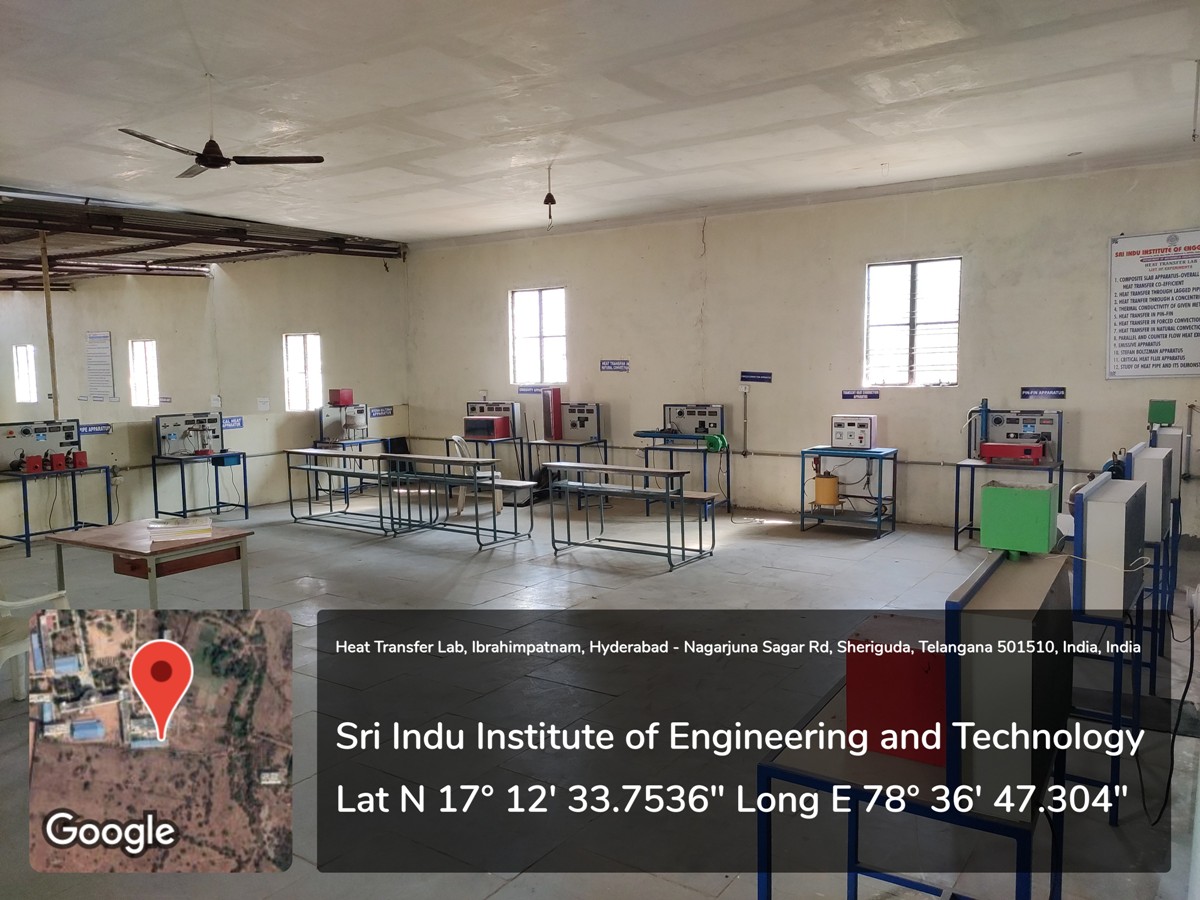
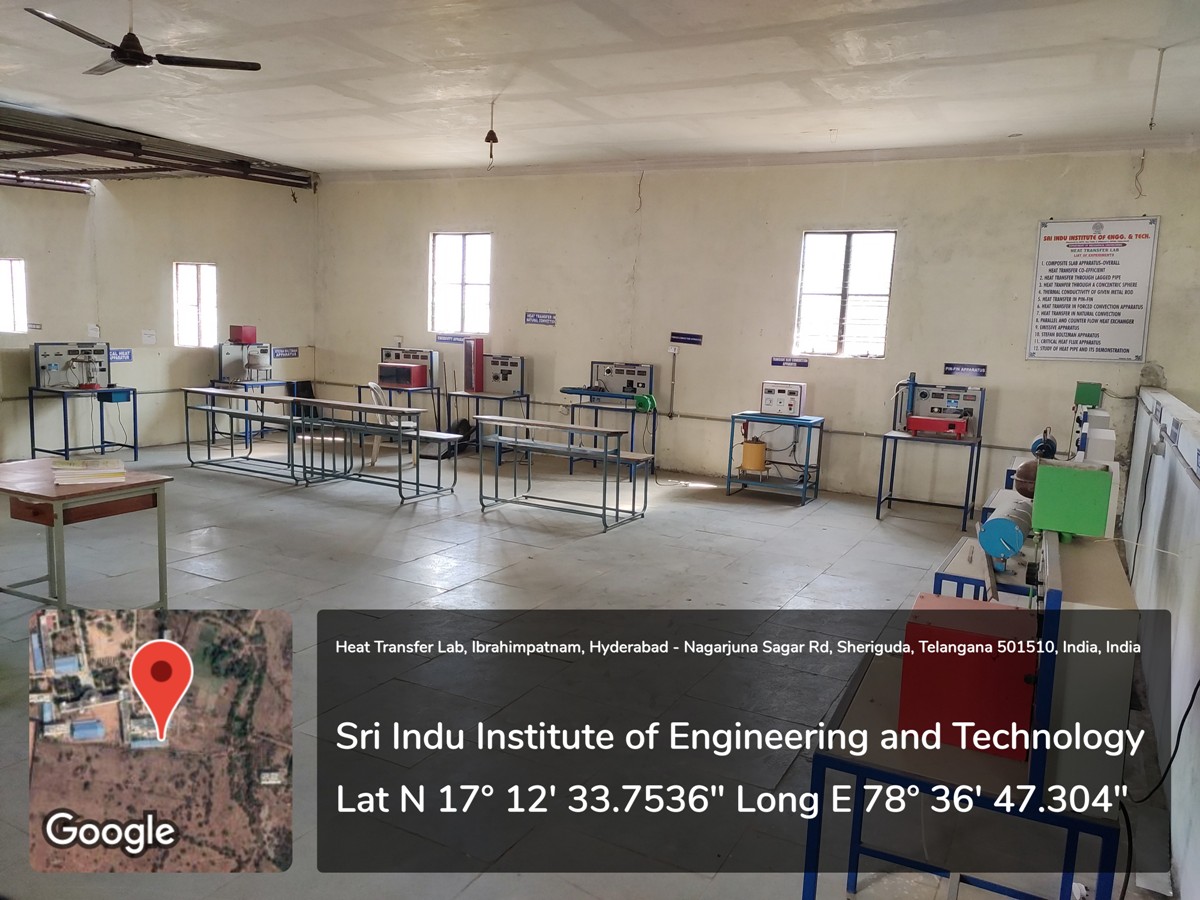
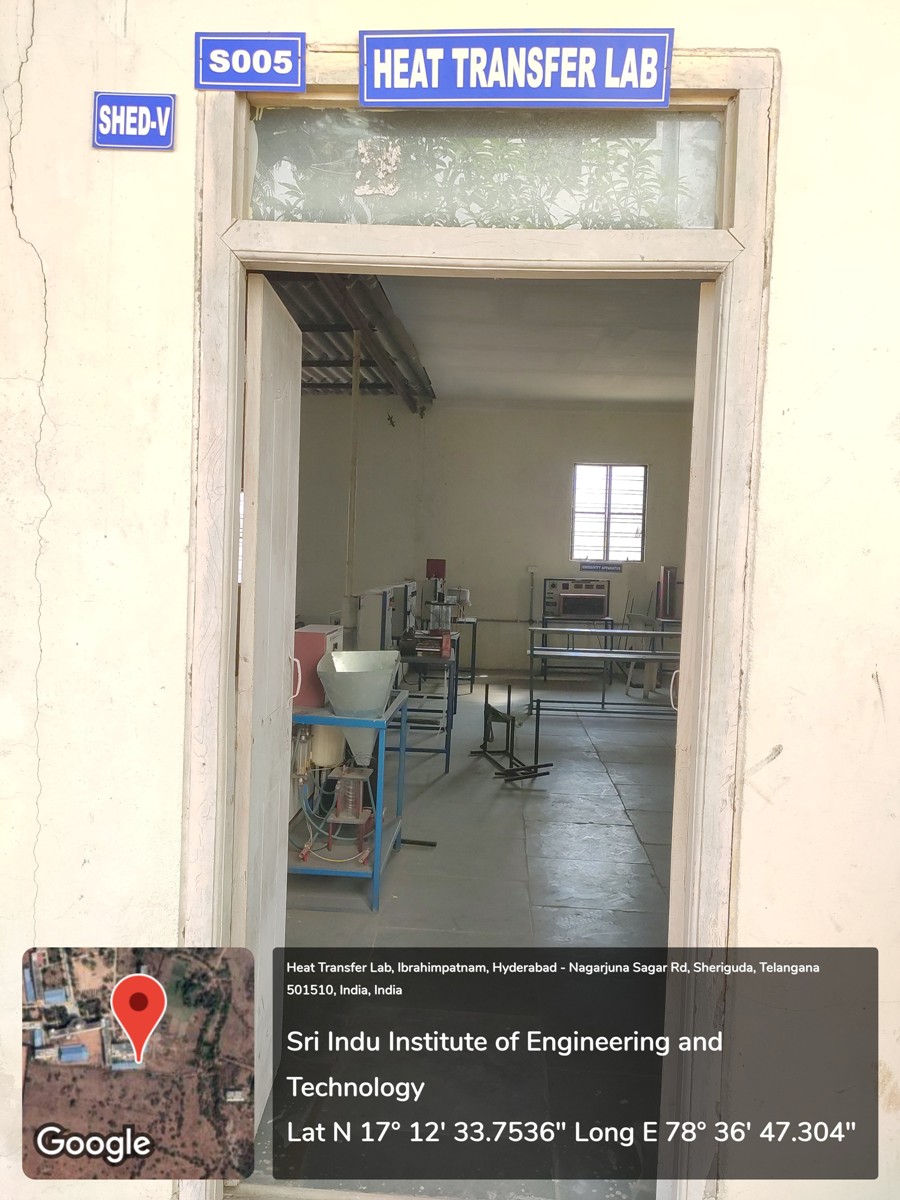
Objectives of the lab
To provide the students with the basic knowledge of Computer Aided Drafting(CAD) Techniques to draw various machine components. The course presents the elements of solid modeling, creation of parts and the assembly of parts to form a final design using softwares, And the operation of CNC machines.
List of Experiments
- Drafting: Development of part drawings for various components in the form of orthographic and isometric. Representation of dimensioning and tolerances.
- Part Modeling: Generation of various 3D Models through Protrusion, revolve, sweep. Creation of various features. Study of parent child relation. Feature based and Boolean based modeling and Assembly Modeling. Study of various standard Translators. Design of simple components.
- Determination of deflection and stresses in 2D and 3D trusses and beams.
- Determination of deflections, principal and Von-mises stresses in plane stress, plane strain and Axi-symmetric components.
- Determination of stresses in 3D and shell structures (at least one example in each case)
- Estimation of natural frequencies and mode shapes, Harmonic response of 2D beam.
- Study state heat transfer analysis of plane and axi-symmetric components.
- Development of process sheets for various components based on Tooling and Machines.
- Development of manufacturing defects and tool management systems.
- Study of various post processors used in NC Machines.
- Development of NC code for free form and sculptured surfaces using CAM software.
- Machining of simple components on NC lathe and Mill by transferring NC Code / from CAM software.
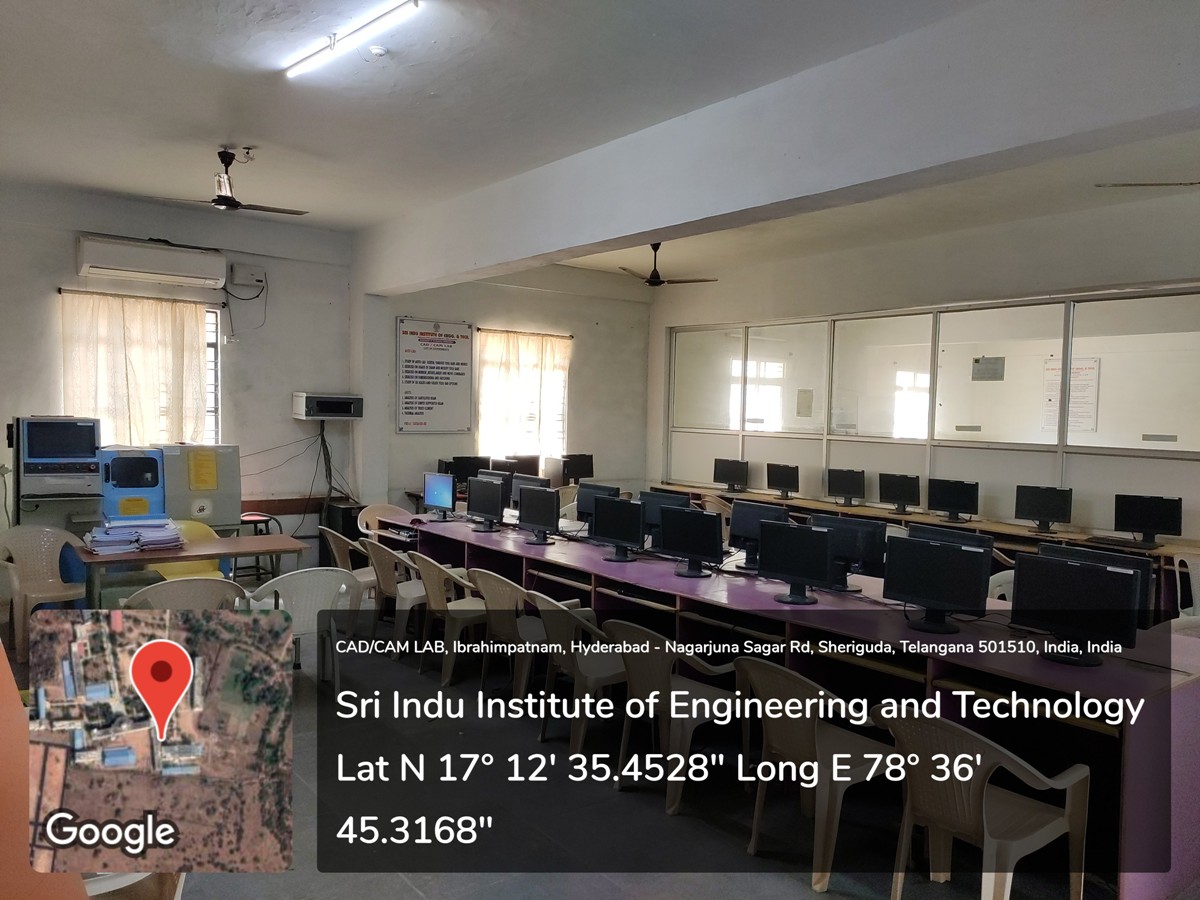
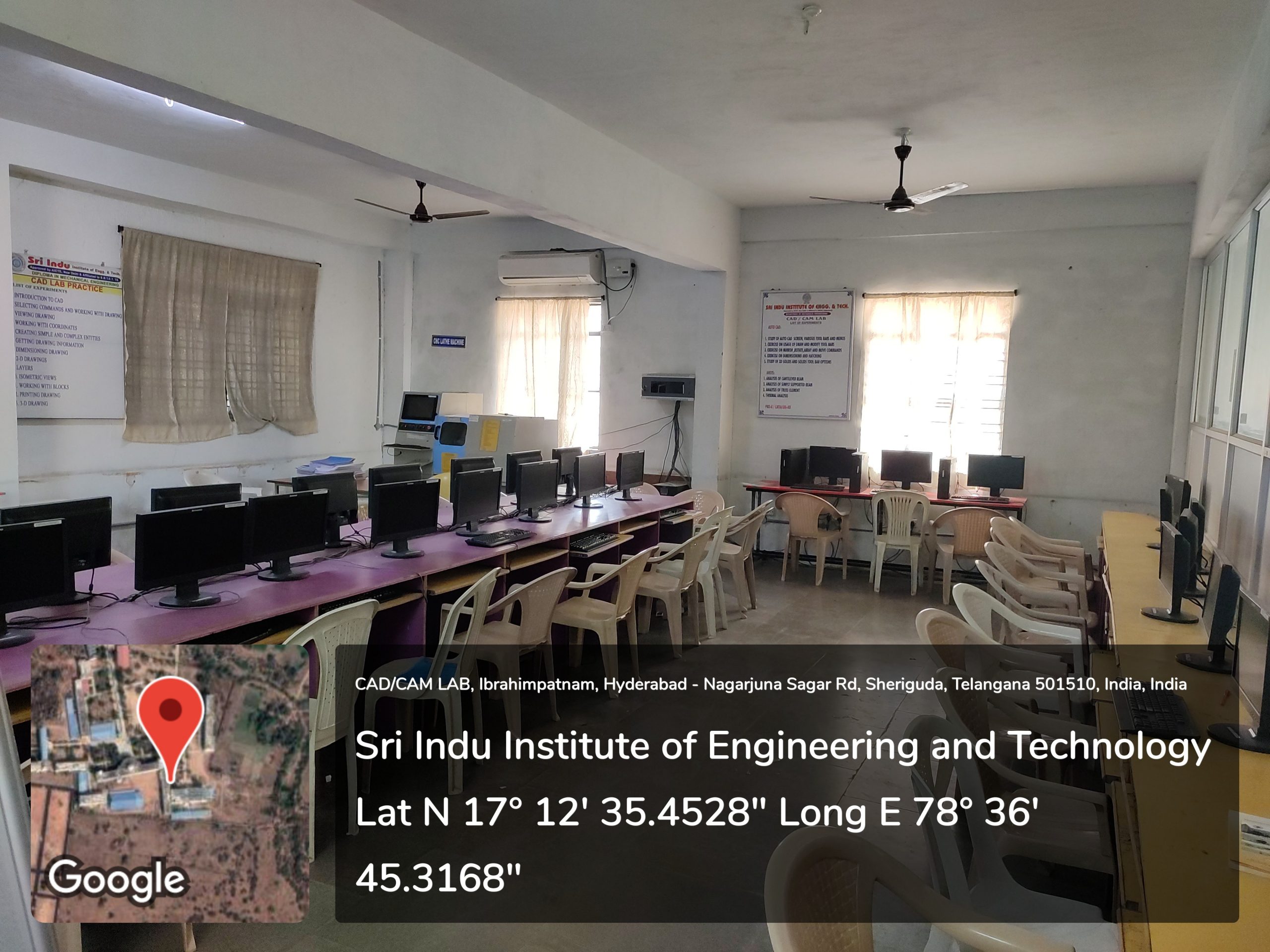
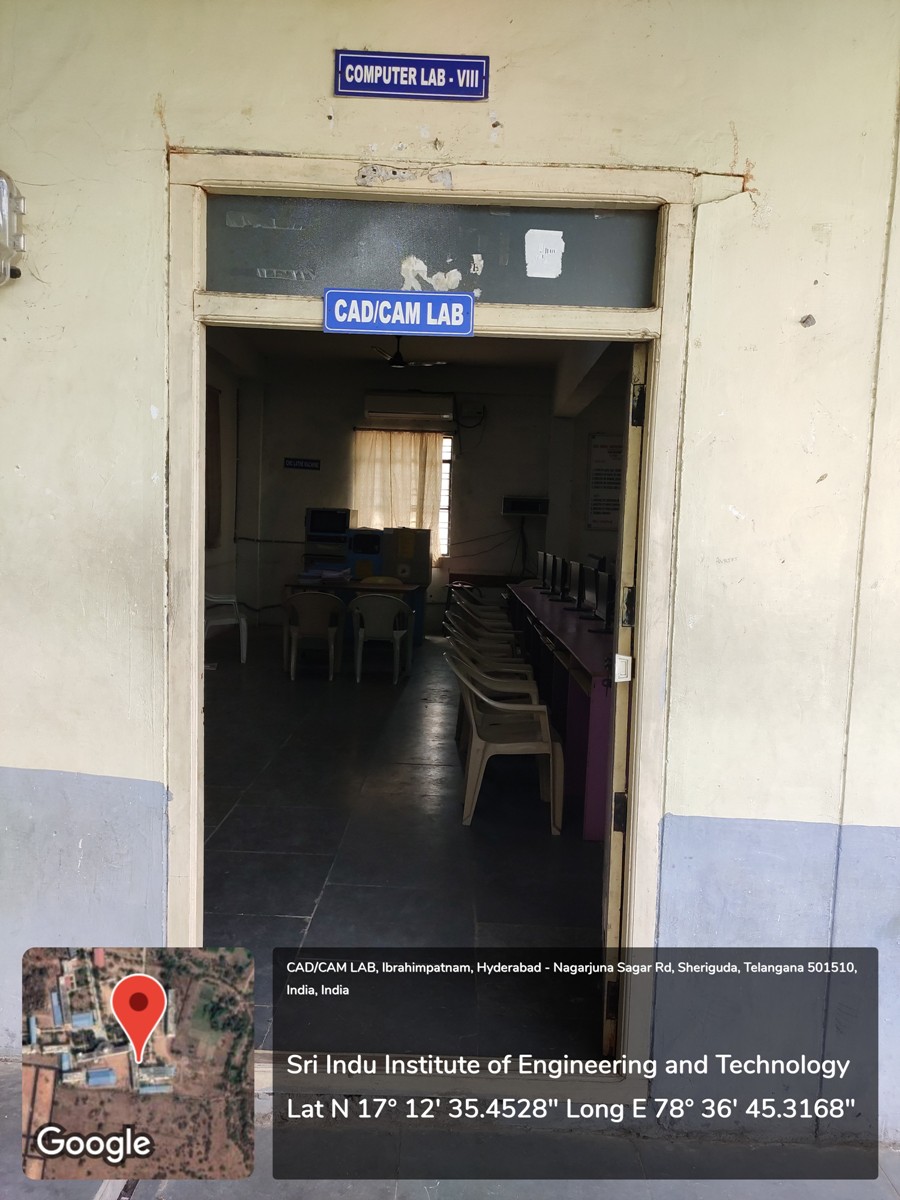
Labs For IV Year I Semester
Objectives of the lab
To provide the students with the basic knowledge of Computer Aided Drafting (CAD) Techniques to draw various machine components. The course presents the elements of solid modeling, creation of parts and the assembly of parts to form a final design using softwares, the operation of CNC machine.
List of Experiments
- Drafting: Development of part drawings for various components in the form of orthographic and isometric. Representation of dimensioning and tolerances.
- Part Modeling: Generation of various 3D Models through Protrusion, revolve, sweep. Creation of various features. Study of parent child relation. Feature based and Boolean based modeling and Assembly Modeling. Study of various standard Translators. Design of simple components.
- Determination of deflection and stresses in 2D and 3D trusses and beams.
- Determination of deflections, principal and Von-mises stresses in plane stress, plane strain and Axi-symmetric components.
- Determination of stresses in 3D and shell structures (at least one example in each case)
- Estimation of natural frequencies and mode shapes, Harmonic response of 2D beam.
- Study state heat transfer analysis of plane and axi-symmetric components.
- Development of process sheets for various components based on Tooling and Machines.
- Development of manufacturing defects and tool management systems.
- Study of various post processors used in NC Machines.
- Development of NC code for free form and sculptured surfaces using CAM software.
- Machining of simple components on NC lathe and Mill by transferring NC Code / from CAM software.



Objectives of the lab
The students study to Characterize and Calibrate measuring devices. Identify and analyze errors in measurement. And also learn Calibration of Pressure Gauges, temperature, LVDT, capacitive transducer, rotameter.
List of Experiments
- Calibration of Pressure Gauges.
- Calibration of transducer for temperature measurement.
- Study and calibration of LVDT transducer for displacement measurement.
- Calibration of strain gauge for temperature measurement.
- Calibration of thermocouple for temperature measurement.
- Calibration of capacitive transducer for angular displacement.
- Study and calibration of photo and magnetic speed pickups for the measurement of speed.
- Calibration of resistance temperature detector for temperature measurement.
- Study and calibration of a rotameter for flow measurement.
- Study and use of a Seismic pickup for the measurement of vibration amplitude of an engine bed at various loads.
- Study and calibration of Mcleod gauge for low pressure.
- Measurement and control of Pressure of a process using SCADA system.
- Measurement and control of level in a tank using capacitive transducer with SCADA.
- Measurement and control of temperature of a process using resistance temperature detector with SCADA.
- Measurement and control of flow of a process using SCADA systems.
